Ever since I had the privilege of witnessing the breathtaking beauty of Mount Nanga Bawa under the sun in December 2019, I've been captivated by this magnificent sight. In November 2020, I visited Deqin, Yunnan, and once again experienced the wonders of nature. The sight of the Meili Snow Mountain, shrouded in a magnificent golden glow, made the 6,000-kilometer journey truly worthwhile.

The Meili Snow Mountain is located in the central section of the Hengduan Mountains, at the junction of Yunnan, Tibet, and Sichuan provinces (regions), approximately 10 kilometers northeast of Deqin County, Diqing Prefecture, Yunnan Province. The mountain range stretches 150 kilometers north-south and is a key component of the Three Parallel Rivers World Heritage Site. This majestic mountain has 13 peaks with an average altitude of over 6,000 meters. Among them, the main peak, Kawagebo, is 6,740 meters above sea level, making it the highest peak in Yunnan Province. Due to its remote location, reaching Meili Snow Mountain is not easy. Generally, one must first travel to Lijiang City, Yunnan Province, or Shangri-La City, Diqing Prefecture. From there, there are three ways to reach Deqin County, home to the snow-capped mountains: First, join a tour group, either carpooling or chartering. Many travel agencies, considering cost, only accept groups of two or more. Chartering a car is expensive, costing at least 1,000 yuan per day from Lijiang to Deqin. Second, drive yourself. Northwestern Yunnan's mountains are high and the roads are treacherous, making it a challenge for those unfamiliar with the terrain. Traveling alone is definitely not advisable. Third, take a shuttle bus. There's a daily bus from Lijiang to Deqin, and multiple buses from Lijiang to Deqin via Shangri-La. Tickets can be purchased on China-TravelNote or through the "Lijiang Transportation" and "Diqing Transportation" official accounts. During the off-season, you can also buy tickets directly at the station. To enjoy the stunning scenery, I traveled 6,000 kilometers over four days, using every possible mode of transportation: planes, high-speed trains, subways, and buses (except for the ferry). Here's the itinerary: ★ Day 1: Nantong Station → Shanghai Hongqiao Station (train, 180 kilometers), Shanghai Hongqiao → Shanghai Pudong Airport (subway, 60 kilometers), Shanghai Pudong Airport → Lijiang Sanyi Airport (flight, 2,400 kilometers).
★Day 2: Lijiang → Shangri-La (bus, 180 km), visit Dukezong Ancient Town in Shangri-La, Shangri-La → Deqin (bus, 200 km).
★Day 3: View the sunrise over the Golden Mountain in Meili, Deqin → Lijiang (bus, 340 km), visit Qingxi Park and the Lijiang nightscape in Lijiang.
★Day 4: Lijiang Sanyi Airport → Nanjing Lukou Airport (flight, 2200 km), Nanjing Lukou Airport → Nanjing Railway Station (subway, 60 km), watch the sunset over Xuanwu Lake, Nanjing Railway Station → Nantong Railway Station (high-speed train, 230 km). It should be noted that the drive from Lijiang to Deqin takes seven or eight hours. If you enjoy the journey, this route is a good option, as you'll enjoy scenic views of Jade Dragon Snow Mountain, the Jinsha River, and Haba Snow Mountain. However, if you're looking to reach the scenic area quickly, this route is not recommended, as it's a tedious one and will leave you with back pain by the end of the day. Don't worry about altitude sickness. Although many areas exceed 3,000 meters in altitude, Yunnan and Sichuan, unlike Tibet and Qinghai, have abundant vegetation and are generally safe.

Nantong Station


The impact of the epidemic, the dust of the times

During the epidemic, air tickets are very cheap, with many flights offering discounts of 70% or less.


The following content will first introduce the main attraction, Meili Snow Mountain, and then discuss the scenery along the way, as well as accommodation and dining information: 1. Meili Snow Mountain; 2. Dukezong Ancient Town in Shangri-La; 3. Scenery along the Lijiang-Deqin route: Jade Dragon Snow Mountain, Jinsha River, Baima Snow Mountain, Haba Snow Mountain, and pillow basalt landforms; 4. Lijiang Qingxi Park; 5. Night view of Lijiang Old Town; 6. Sunset at Xuanwu Lake.

【Meili Snow Mountain】

It was dusk when we arrived in Deqin. The snow-capped mountains appeared hazy due to the backlight. Meili Snow Mountain is also known as the "Thirteen Peaks of the Prince", but what we actually see are nine peaks instead of thirteen. From south to north (from left to right when facing the snow-capped mountains), they are: Mencimu Peak (Goddess Peak, 6054 meters above sea level), Jiwaren'an Peak (Five Buddha Crown, 5470.5 meters), Bujiongsongjiewuxue Peak (Heroic Sons and Daughters Peak, 6000 meters), Sawanidingjiuchao Peak (Sixteen Venerables Peak, 5880 meters), Kawagebo Peak (main peak, 6740 meters), Mabingzha Lawangdui Peak (Invincible Demon-Subduing God of War Peak, General Peak, 6365 meters), Cuguilaka Peak (5993 meters), Nairidingka Peak (Sacred Mountain Peak, 6379 meters), Shuolazanguimianbu Peak (5229 meters). 

Mentsem Peak (Goddess Peak, 6054 meters above sea level)

Jiwaren'an Peak (Five Buddha Crown, 5470.5m)

Bujiongsongjiewuxue Peak (Heroic Sons and Daughters Peak, 6000m)

Sawaniding Jiuchao Peak (Sixteen Venerables Peak, 5880m)

Kawagbo Peak (main peak, 6740 meters)


Mabingzha Lawangdui Peak (Invincible God of War Peak, General Peak, 6365 meters)

Cugilaka Peak (5993 meters)

Nairidingka Peak (Summit of the Holy Mountain, 6379 meters)

Talking about Lhazangui Mianbu Peak (5229 meters)

Deepen your impression of the nine peaks through a video
 The foreshadowing is over, and the climax is here. First, here's a 98-second video showing how golden light permeates the peaks and covers the snow-capped mountains.
The foreshadowing is over, and the climax is here. First, here's a 98-second video showing how golden light permeates the peaks and covers the snow-capped mountains. Let’s take a closer look at the pictures.


 src="https://dimg04.c-ctrip.com/images/0103d120008aku8129A1A_R_800_10000_Q90.jpg?proc=autoorient" />
src="https://dimg04.c-ctrip.com/images/0103d120008aku8129A1A_R_800_10000_Q90.jpg?proc=autoorient" /> 










Traveling alone, you can only take selfies.




Wonderful moments are memorable. But all splendor will eventually return to mediocrity.


 To fully capture the sunrise, I used two devices: a Sony camera, stationary, to capture the entire sunrise; and a Huawei phone, free-range, focusing on close-ups of Mount Mentsemu and Mount Kawagebo. When I sorted through the photos and videos afterwards, I realized this approach yielded the best results, with virtually no highlights missed. Let's share this wonderful moment through this video:
To fully capture the sunrise, I used two devices: a Sony camera, stationary, to capture the entire sunrise; and a Huawei phone, free-range, focusing on close-ups of Mount Mentsemu and Mount Kawagebo. When I sorted through the photos and videos afterwards, I realized this approach yielded the best results, with virtually no highlights missed. Let's share this wonderful moment through this video: Here's another close-up of Mount Kawagebo and Mount Mentsemu:
There are three key points to viewing the Meili Snow Mountain: First, the season: the dry season from October to April is optimal. Second, the time of day: aim 10 minutes before the predicted sunrise to ensure you catch the first rays of sunlight. Third, the location: the Feilai Temple Observation Deck and the Wunongding Observation Deck offer the best views, with Feilai Temple being the easiest to reach. I made some travel plans beforehand and set the trip for mid-November. I booked the Meili Past Inn on China-TravelNote. It boasts a prime location, located above the Feilai Temple Observation Deck, offering views of the snow-capped mountains from my room.









Big temperature difference between morning and evening

At an altitude of 3,240 meters, no one reacted much, but the snack bag was "bulging".


The hotel is relatively "bourgeois" and has relatively complete facilities. The first floor houses the restaurant and common area, where breakfast includes bread, milk, and coffee. There are 12 rooms on floors 2 through 4 facing the snow-capped mountains, with higher floors offering higher prices. Other rooms don't offer a view of the mountains, but guests can enjoy the view from the rooftop terrace. Over 20 pictures from Western art exhibitions hang in the hallways. Rooms are equipped with electric blankets, heating ducts, heated bathrooms, and telescopes. Self-service laundry is also available. The shuttle bus from Feilai Temple to Deqin County Bus Station is right at the door, offering free pick-up at 8:40 AM every day.

Western Art Exhibition




Rooftop terrace

You can watch the documentary "Kawagebo"

Although Mount Meili is not as high as Mount Everest, no one has yet successfully reached the summit. By the way, there are many hotels around the Feilai Temple Observation Deck. From Meili Past Inn, walking down National Highway 214, there are Xuelong Meili Yiju Hotel, Kawagebo Hotel, Feilaisi Boutique Yiju Hotel, Watch 6740 Inn, and finally the Eye of Meili. There are no more hotels further down, just a dark road. It is recommended to choose a hotel near Feilai Temple, close to National Highway 214, and located in the front row, where the view is the widest and not blocked by houses, telephone poles, mountains, etc. Under market competition, you must believe that you get what you pay for. The higher the price, the better the view.




Deqin County is at the foot of the mountain, and the street lights are like stars in the night sky.

Feilai Temple is located in Meili Snow Mountain National Park and is one of the best places to view Meili Snow Mountain. Eight white pagodas, the symbol of Feilai Temple.


Eight white pagodas, the symbol of Feilai Temple.




 The two sacred mountains I was fortunate to see, Mount Namjagbarwa and Mount Kawagebo, are as pure as snow, towering and beautiful, evoking a sense of solitude and tranquility. In the 2005 supplement of National Geographic China (Special Edition on Beauty of China), both snow-capped mountains were selected as one of the "Ten Most Beautiful Mountains in China," with "Namjagbarwa: Paradise in the Clouds" ranked first and "Meili: Guard of Honor of the Snow God" fourth. The car has started, the scenery is getting farther and farther away, and we say goodbye reluctantly...
The two sacred mountains I was fortunate to see, Mount Namjagbarwa and Mount Kawagebo, are as pure as snow, towering and beautiful, evoking a sense of solitude and tranquility. In the 2005 supplement of National Geographic China (Special Edition on Beauty of China), both snow-capped mountains were selected as one of the "Ten Most Beautiful Mountains in China," with "Namjagbarwa: Paradise in the Clouds" ranked first and "Meili: Guard of Honor of the Snow God" fourth. The car has started, the scenery is getting farther and farther away, and we say goodbye reluctantly... 

The car has started, the scenery is getting farther and farther away, and we say goodbye reluctantly...
 src="https://dimg04.c-ctrip.com/images/0104k120008ad9ahj0254_R_800_10000_Q90.jpg?proc=autoorient" />
src="https://dimg04.c-ctrip.com/images/0104k120008ad9ahj0254_R_800_10000_Q90.jpg?proc=autoorient" /> 




Dukezong Ancient Town, located in Shangri-La City, the capital of Diqing Tibetan Autonomous Prefecture, is a relatively well-preserved cluster of Tibetan dwellings. Unfortunately, in the early morning of January 11, 2014, a fire broke out in the ancient town, destroying over 100 buildings, about one-third of the total. Luckily, the prayer wheels escaped the disaster and were not damaged.

This time, we visited Moonlight Square, Guishan Park, Big Buddha Temple, the prayer wheels, the Central Town Hall, the Diqing Red Army Long March Museum and other attractions.




Moonlight Plaza


Turtle Mountain Ancient Well


Two springs gushing out

Turtle Mountain Park


Dragon King Temple




Photography is not allowed indoors.








Looking at the ancient city from afar, I wonder which of these houses were rebuilt after the fire?





Sculpture of the "Prospering Fan Tribes." Fan refers to foreign countries or ethnic groups. The Diqing Red Army Long March Museum shares offices with the Diqing Prefecture Cultural Relics Management Office and the Central Town Gongtang Cultural Relics Management Office.


The Diqing Red Army Long March Museum shares offices with the Diqing Prefecture Cultural Relics Management Office and the Central Town Gongtang Cultural Relics Management Office. The museum, built to commemorate the Red Army's Long March in Diqing in 1936, opened in August 2007. It features exhibition halls such as the Prologue Hall, Memories of Snow-capped Mountains and Grasslands, Today's Long March Route, and the New Look of the Diqing Plateau. These halls display items from that period, including ships, guns, lanterns, kettles, grain bags, medicine boxes, slogans, books, and documents. At the end of April 1936, the Second and Sixth Red Army Corps, led by He Long, Ren Bishi, Guan Xiangying, Xiao Ke, and Wang Zhen, crossed the Jinsha River, climbed over the Yaha Snow Mountain (Xuecha Liangzi), and entered Zhongdian (present-day Shangri-La).

A photo of boatmen helping the Red Army cross the Jinsha River. At the end of April 1936, with 28 boatmen ferrying people day and night, after four days and three nights of hard work, more than 18,000 Red Army soldiers arrived at Zhongdian on the east bank of the Jinsha River from Yulong County on the west bank, breaking away from the heavy pursuit and gaining the initiative to march north to successfully join forces with the First and Fourth Front Armies of the Red Army.

Red Army Lantern, the horse lantern used by the Red Army when crossing the river

After crossing the river, he sent a telegram to Zhu De and others: "Our two corps have safely crossed the north bank of the Jinsha River today. Only one boat capsized during the crossing... We will start to advance towards Zhongdian on the 29th..."

Rest in Zhongdian

The Red Army Bridge is located on the Gangqu River in Shangqiaotou Village, Nixi Township, Shangri-La City. In 1936, the Red Army crossed this bridge and then crossed the mountains to enter Ganzi Prefecture, Sichuan Province. Upon arriving in Zhongdian, the Red Army, unlike the inland policy of "striking down local tyrants and dividing up land," respected the religious beliefs and customs of their fellow Tibetans, winning the understanding, help, and support of the general public and monks. The eight great Kangcans of Songzanlin Monastery, the largest Tibetan Buddhist monastery in Zhongdian at the time, opened their granaries to distribute grain, and the monks donated brick tea, ghee, and barley to the Red Army. Commander He Long paid a special visit to the temple to express his gratitude. He presented it with a brocade scroll inscribed with the words "Prosperity of the Tribes," along with a pair of large, exquisite porcelain vases and other gifts, leaving behind a beautiful story of unity between the military and the people, and between the two nations. The brocade scroll is 2.85 meters long and 0.64 meters wide. It has the words "Zhongdian Guihua Temple" inscribed vertically on the right edge and "He Long" inscribed vertically in the lower left corner. This is a photocopy; the original is housed in the National Museum of China. The Central Town Hall, also known as the Sutra Hall, is the center for Tibetan meetings, gatherings and religious activities in Shangri-La.



The Central Town Hall, also known as the Sutra Hall, is the center for Tibetan meetings, gatherings and religious activities in Shangri-La. In 1936, the Second Red Army Corps rested here for 14 days, the longest rest period during the Long March. 

The main building is three stories high and faces south, integrating Tibetan, Han, and Bai styles. The roof is a typical Han-style structure with brackets; the pillars and the main hall's caisson ceiling are decorated in Tibetan style; and the wall decorations and colorful paintings reflect Bai ethnic elements.


A statue of the Thousand-Armed Guanyin is enshrined in the center of the main hall.


Ultraviolet rays are strong in the plateau.

There are not many tourists in the ancient city. The epidemic has had a significant impact on the tourism industry. Hotels, restaurants, supermarkets, travel agencies, taxis and other businesses all report that business is slow this year. 

【Scenery Along the Way】

The 300-plus kilometers from Lijiang to Deqin may not seem too far, but the roads are all mountainous and the speed limit is 70 mph, so the entire journey takes 7-8 hours.


Along the way, you can see Jade Dragon Snow Mountain, Jinsha River, Baima Snow Mountain, Haba Snow Mountain, pillow basalt landforms, Tibetan houses, cattle and sheep, and grasslands.


Jade Dragon Snow Mountain under the rising sun. The shot was a bit bumpy from inside the car and the distance was far, so the picture isn't very clear.




Build roads over mountains and build bridges over water

Jinsha River





Tiger Leaping Gorge Scenic Area Tourist Service Center, shaped like two shells

Hutiaoxia Township






The mountain road is rugged, so be careful


Haba Snow Mountain Observation Deck


Haba Snow Mountain



Pastoral and poetic, the years are quiet and time seems to have stopped. Do you have the urge to stay?

But after reading the above paragraph, I can’t help but hahaha

Grass drying rack



Shangri-La Passenger Terminal



Move on


Tunnel Protection Network





The safe operation of infrastructure such as power grids in mountainous areas is of great significance


The highest altitude on this trip was over 4,000 meters, but there was basically no reaction.

Pillow basalt landform, located at the pass of Baima Snow Mountain at an altitude of more than 4,000 meters, is a pillow-shaped rock landform formed during the evolution of the earth.

This attraction is suitable for viewing in the afternoon and backlighting in the morning.


Deqin County Passenger Terminal



Deqin County

Return to Lijiang



Baima Snow Mountain Tunnel No. 3

Baima Snow Mountain, also known as Baimang Snow Mountain



These winding curves are like winding mountain roads




See Jade Dragon Snow Mountain Again


I visited Yulong Snow Mountain a few years ago and climbed to the observation deck at an altitude of 4,680 meters to overlook the glacier. This time I was in the car and passed by in a blink of an eye. I couldn’t see the snow-capped mountains very clearly, so here are a few pictures taken on the plane.



Look at some more beautiful high-altitude pictures





Let’s talk about Yunnan’s aviation industry. It was once the most developed civil aviation province in my country. During the Anti-Japanese War, the American Flying Tigers came to China to assist in the war. As our main air force base, Yunnan had a maximum of 52 airports including Chenggong, Wujiaba, Tengchong, and Luliang. After the reform and opening up, the tourism industry developed greatly, and civil aviation became active accordingly. There are currently 15 civil airports in Kunming, Dali, Diqing, Lijiang, and Pu'er. The Lijiang Sanyi Airport that this round trip passes through is an hour's drive from the city. The airport bus leaves every half an hour and stops after the last flight arrives every day. The urban bus stop is located at the Blue Sky Hotel at the intersection of Fuhui Road and Shangri Avenue.

[Lijiang Qingxi Park]

Qingxi Park is a citizen park established based on Qingxi Reservoir. When the weather is calm, you can watch the reflection of Jade Dragon Snow Mountain.





It was windy that day, so I couldn’t see the reflection of the mountain peaks, but I saw the beautiful shadows of the snow-capped mountains in the sunset and afterglow.










Jade Dragon Snow Mountain in the afterglow of sunset



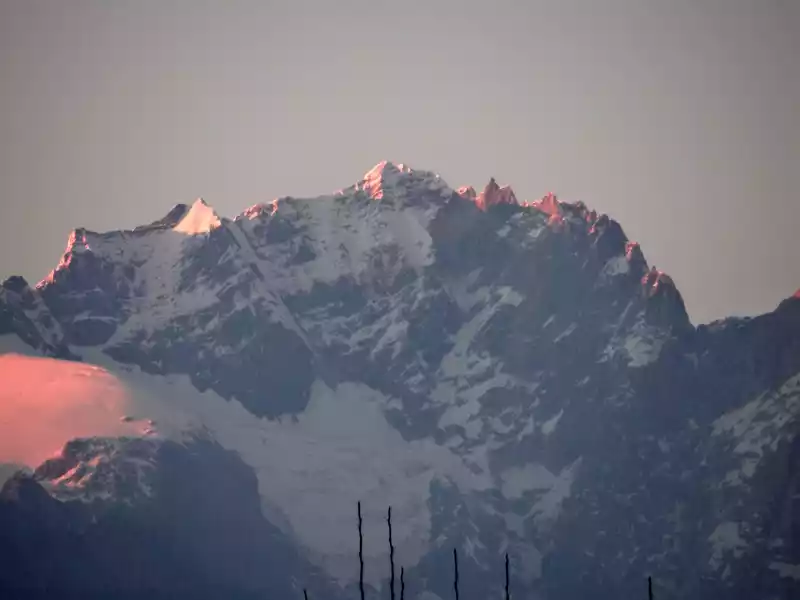
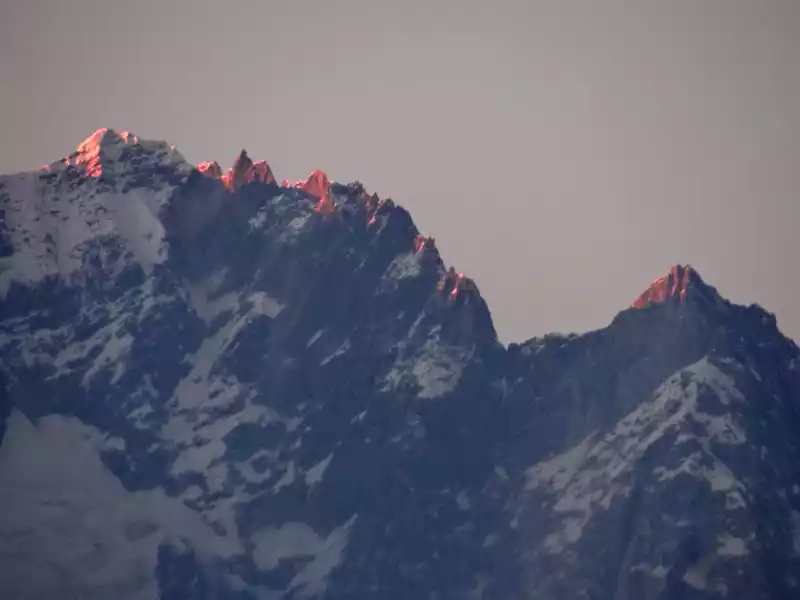
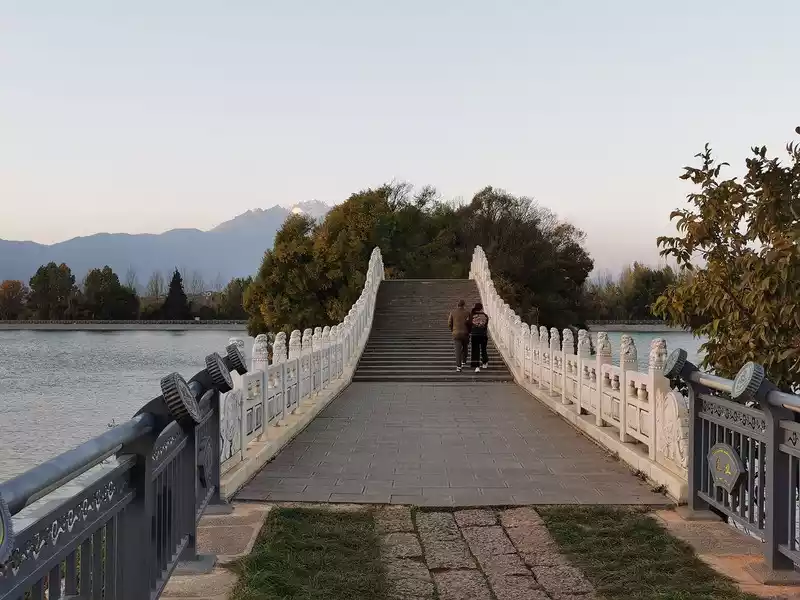
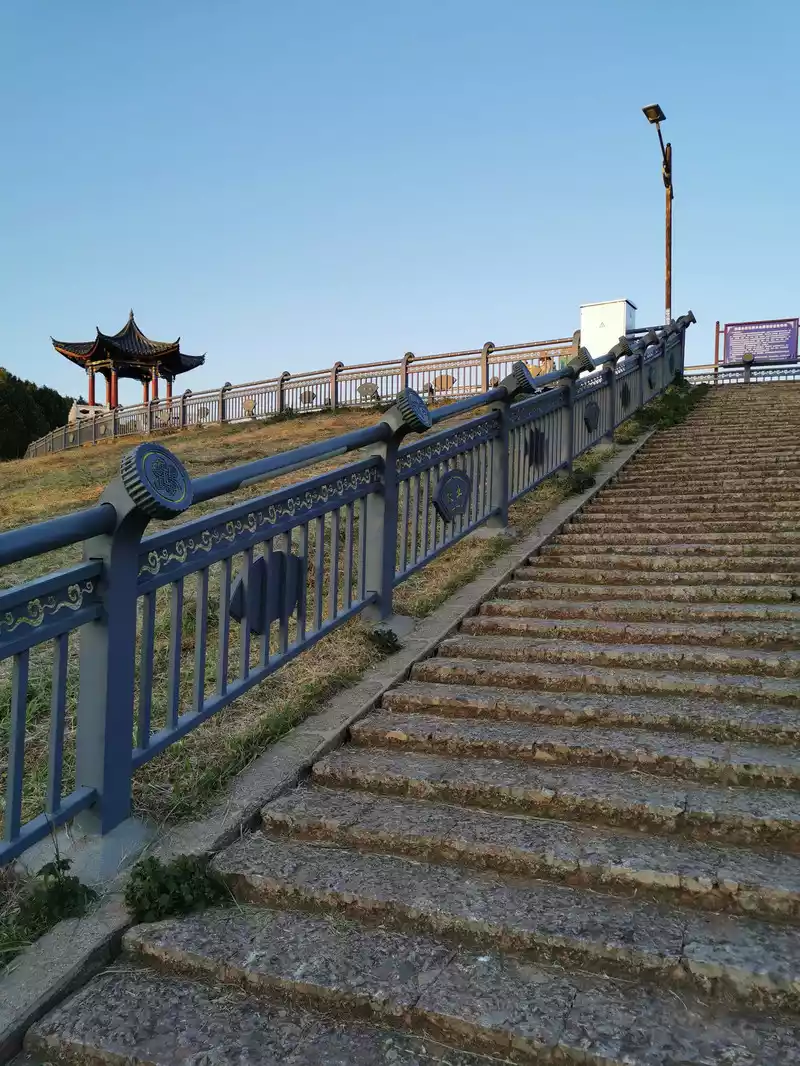
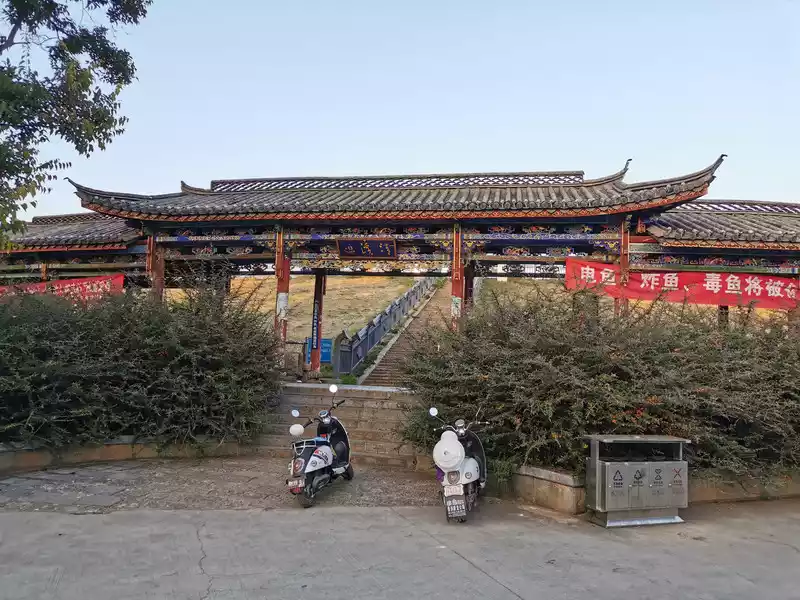
[Lijiang Old Town Night View]
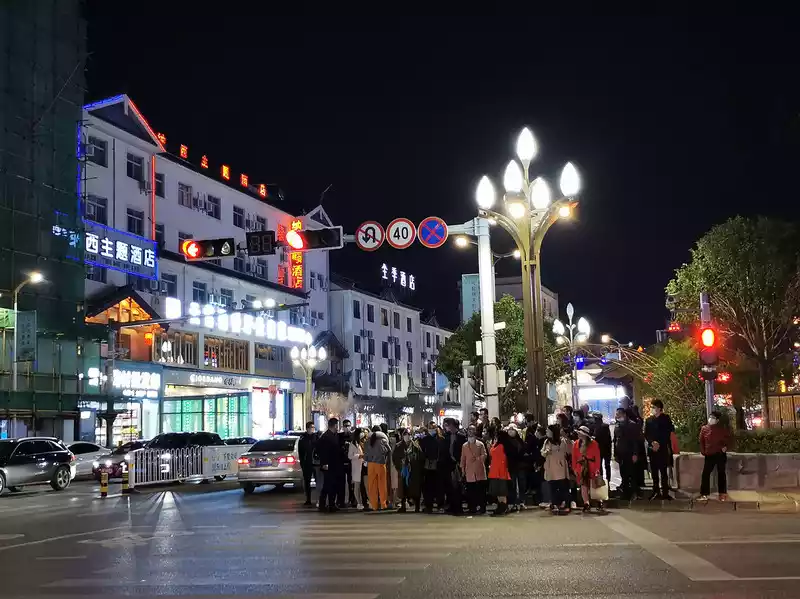
I visited Lijiang during the day a few years ago. I walked through Lijiang Old Town, Shuhe Ancient Town, Sifang Street, Three Eye Wells, Small Bridges and Flowing Waters, etc. This time I took a look at the red lanterns, stone streets, and weeping willows at night.
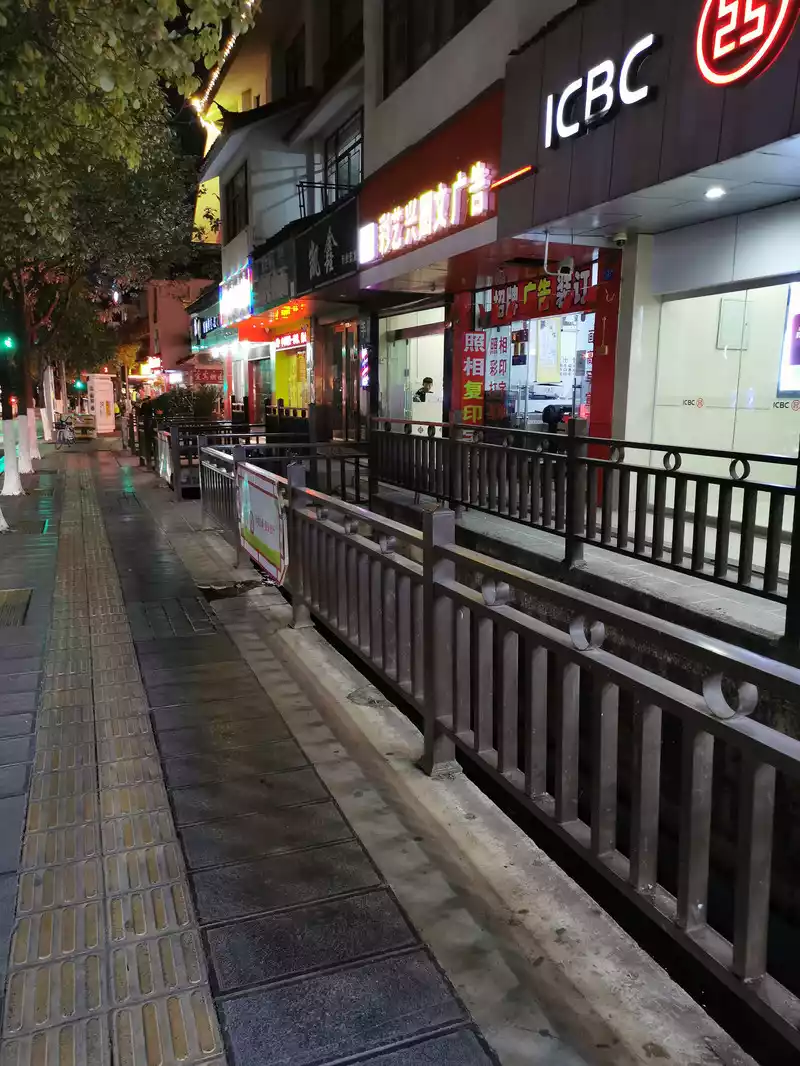
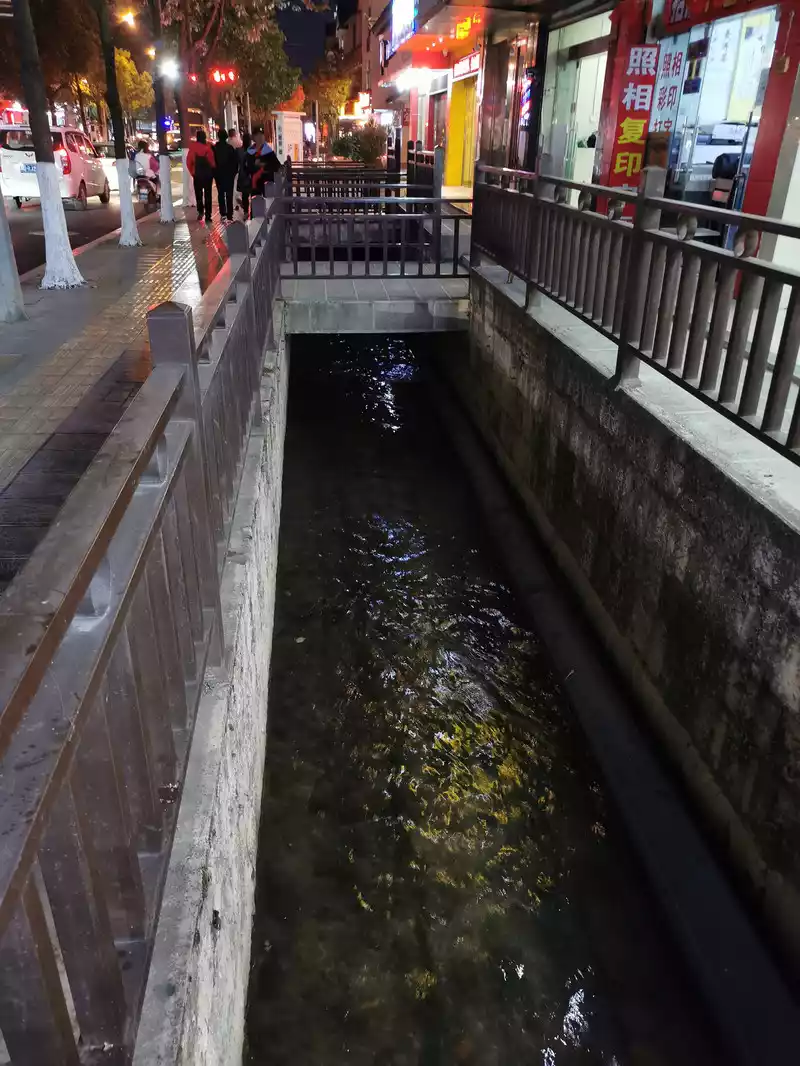
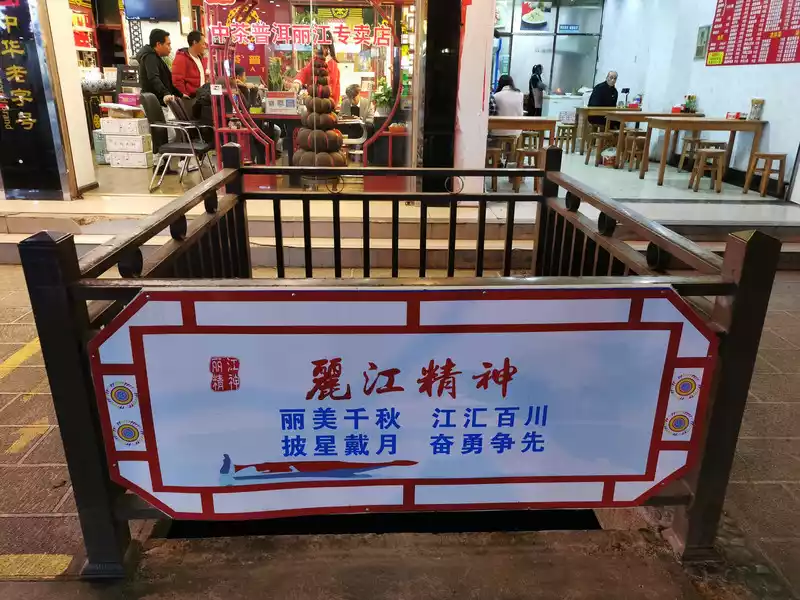
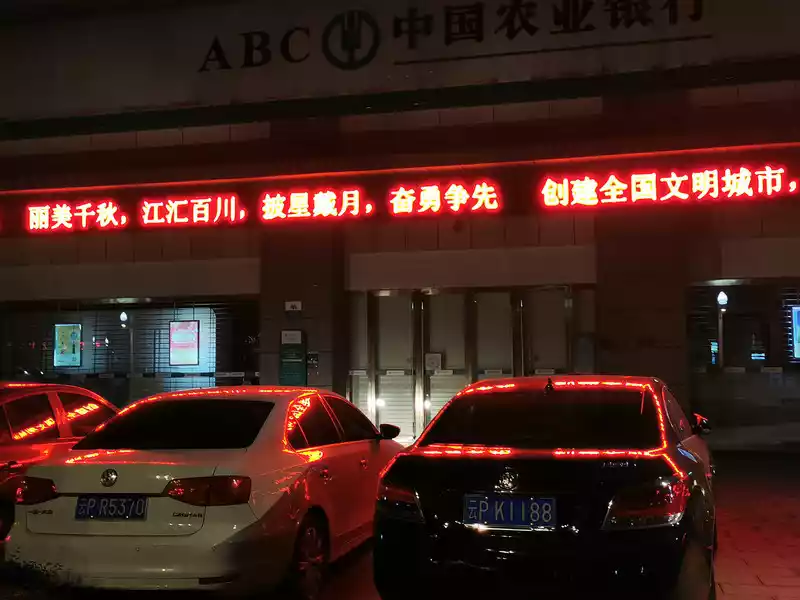
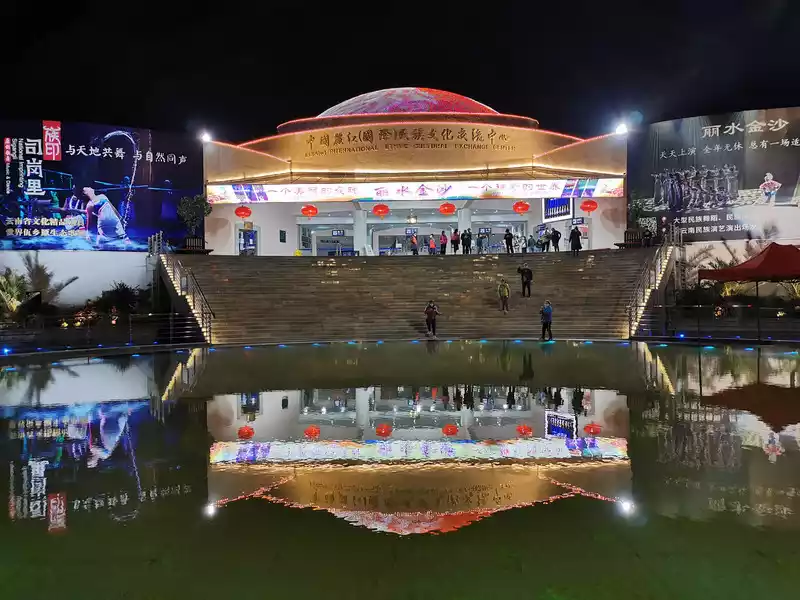
Lijiang National Cultural Exchange Center performs "Lishui Sands" for many years.
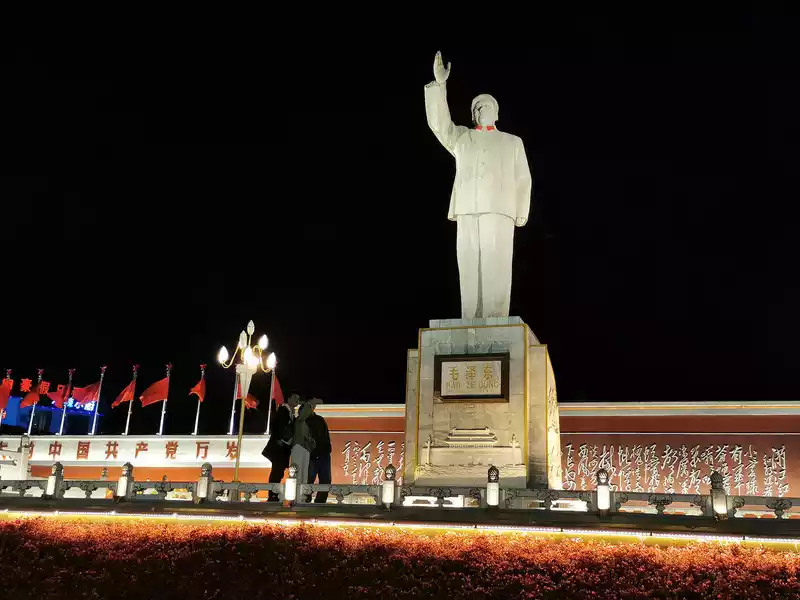
Red Sun Plaza

During the epidemic prevention and control period, you need to check the health code and ID card when entering Lijiang Old Town.
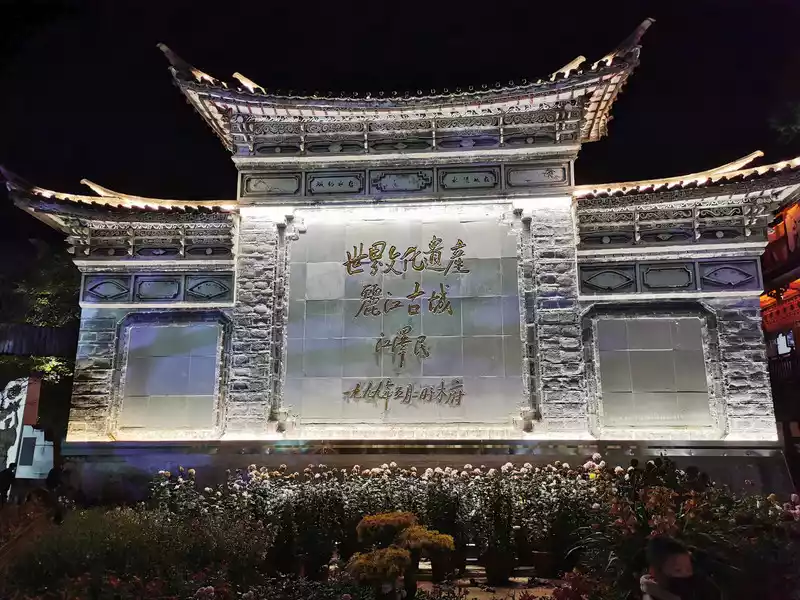
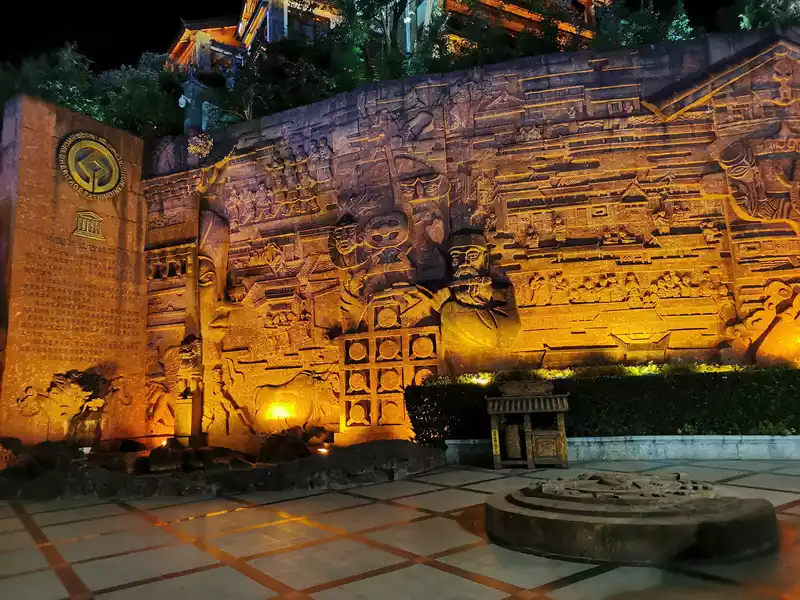
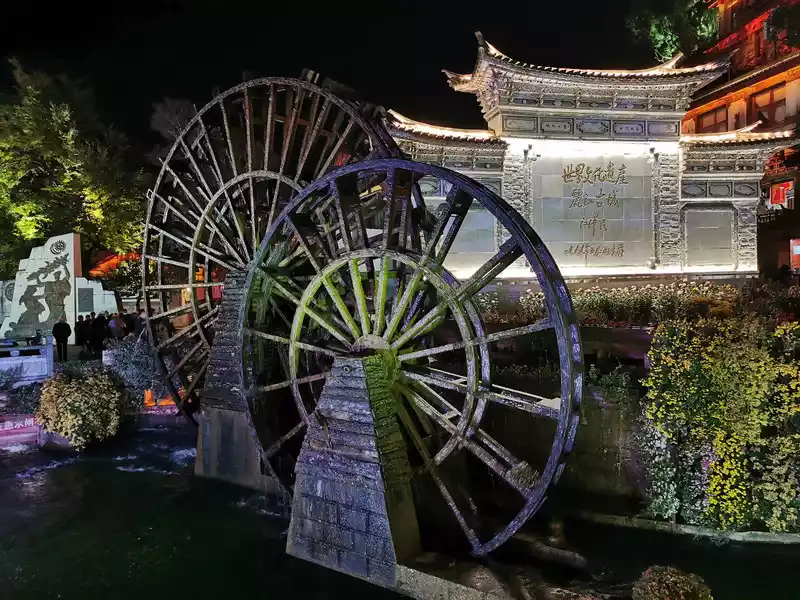
Big Water Truck
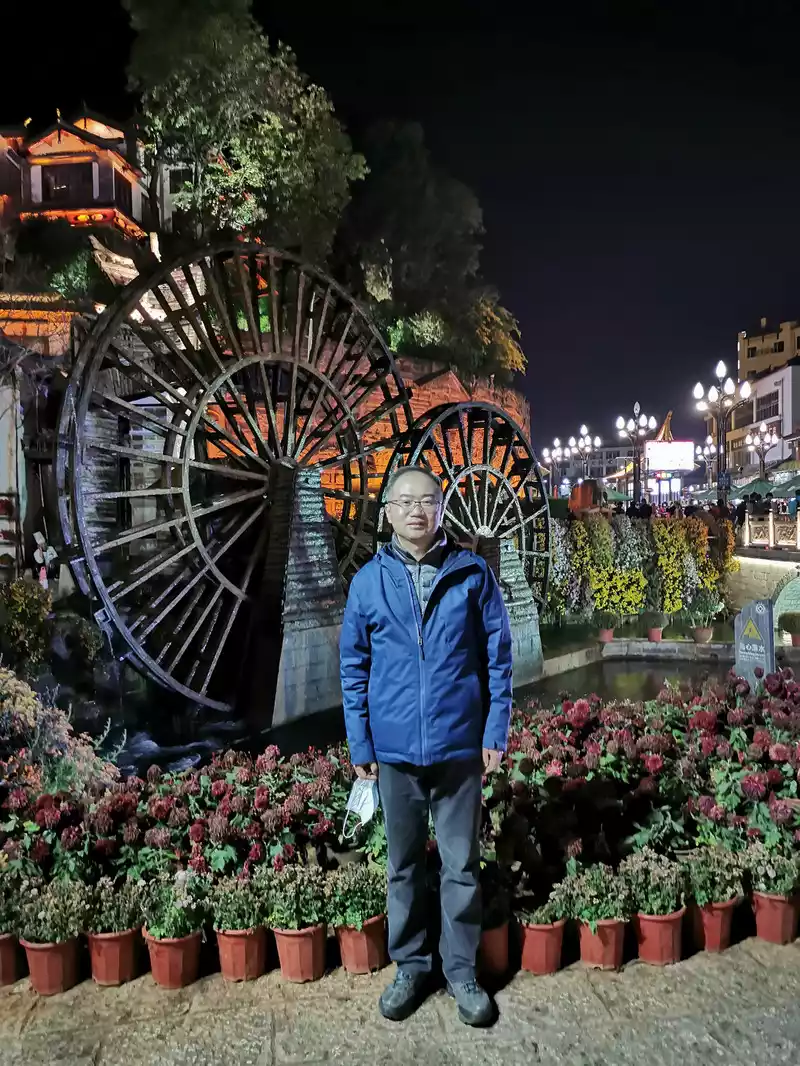
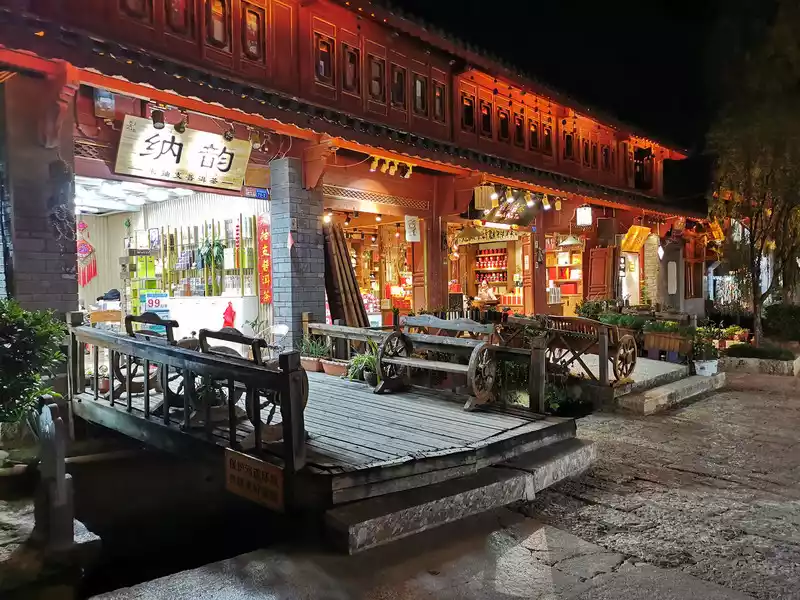
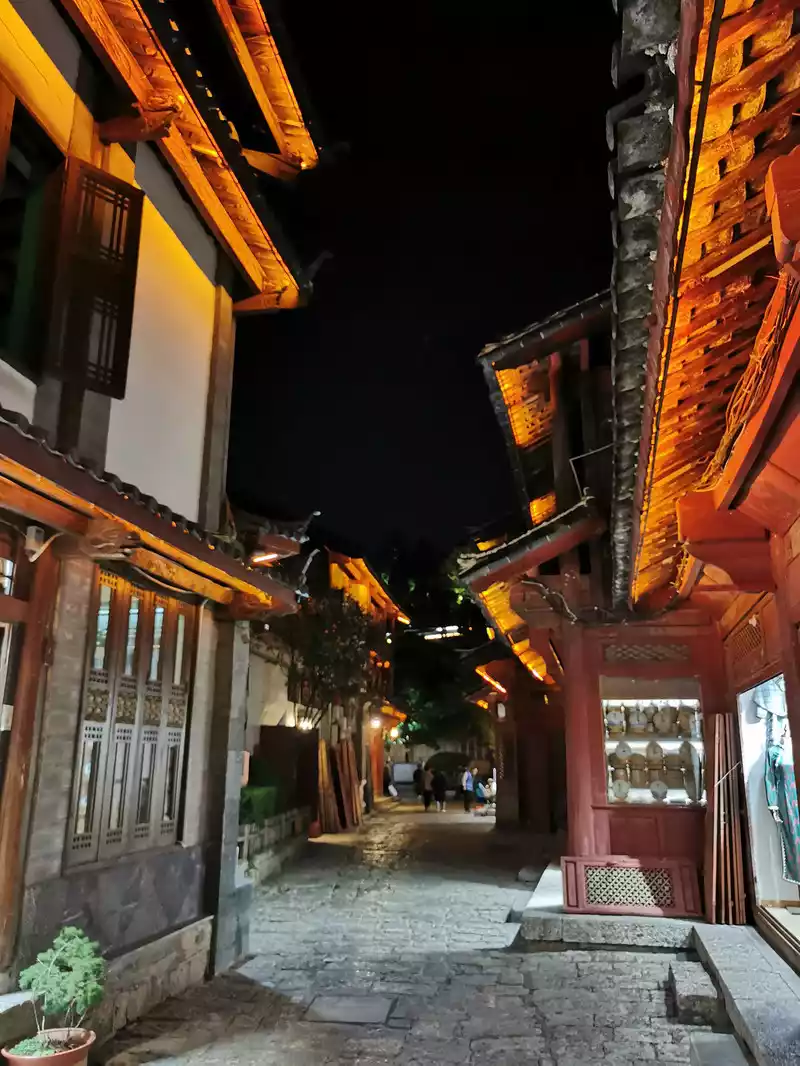
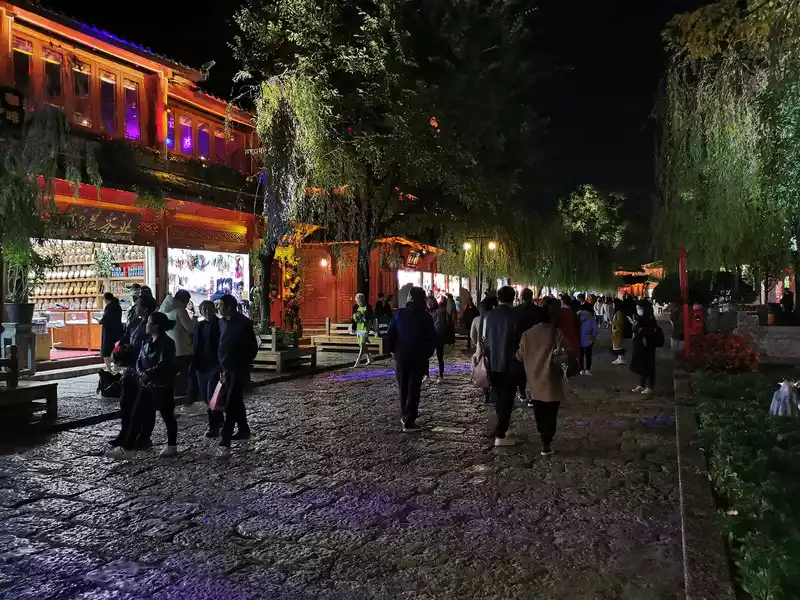
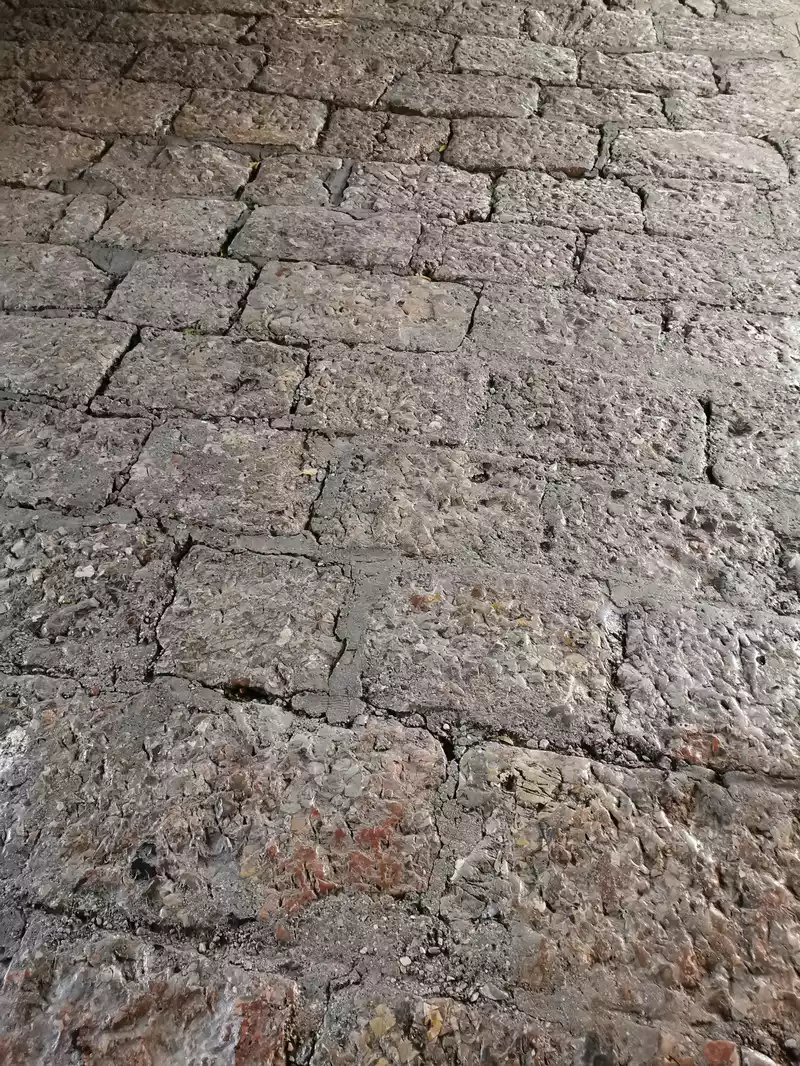
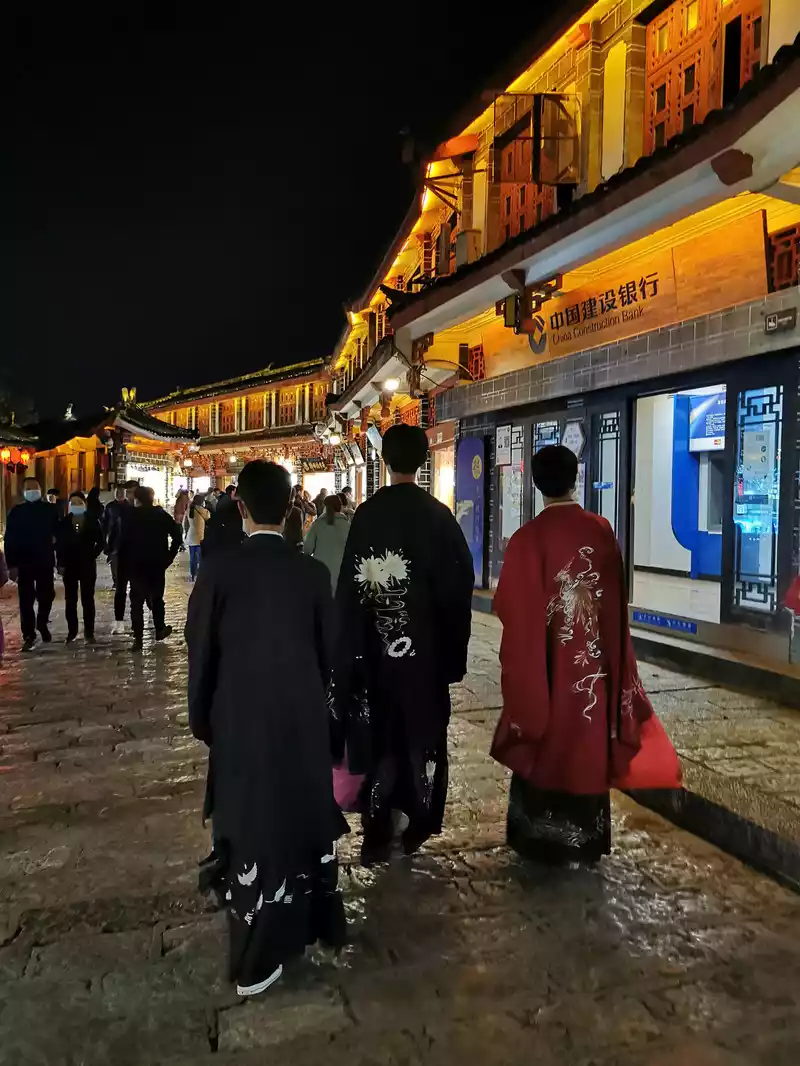
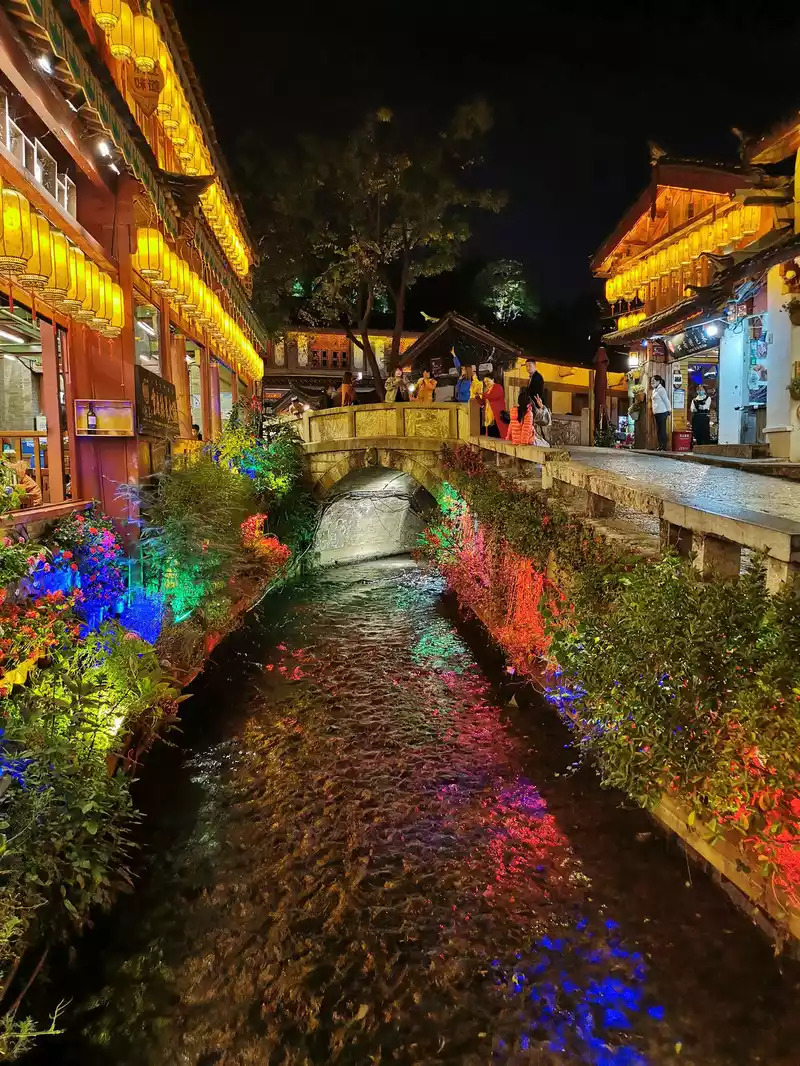
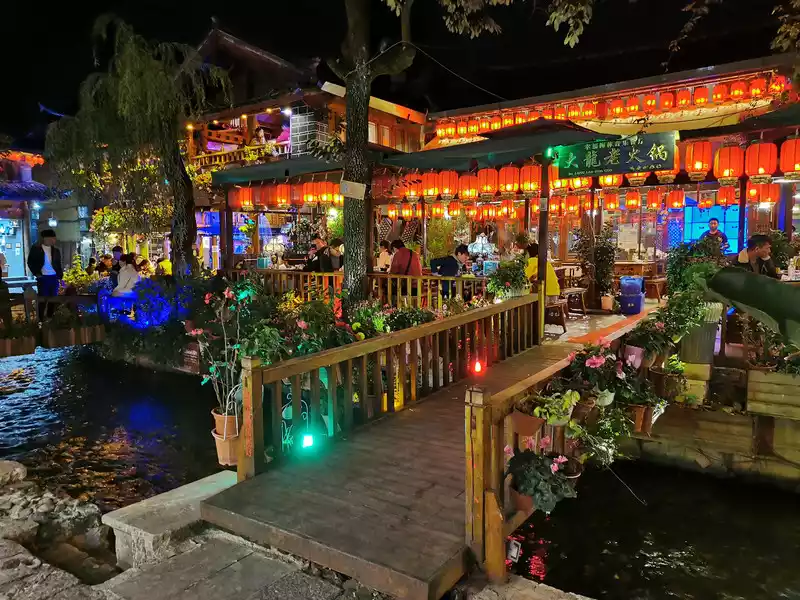
Enjoyed and reveled
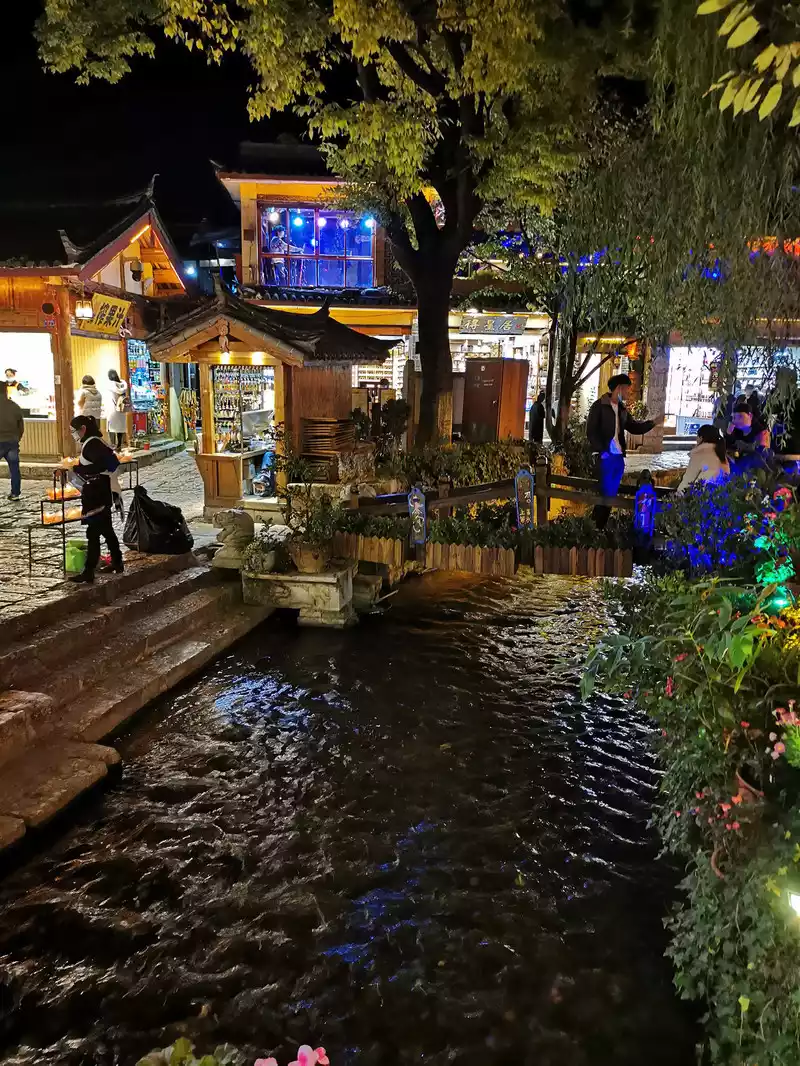
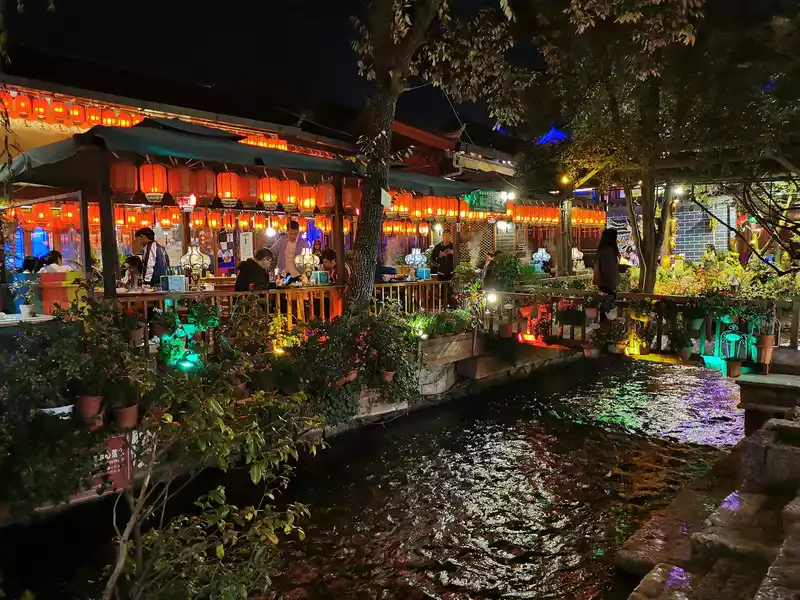
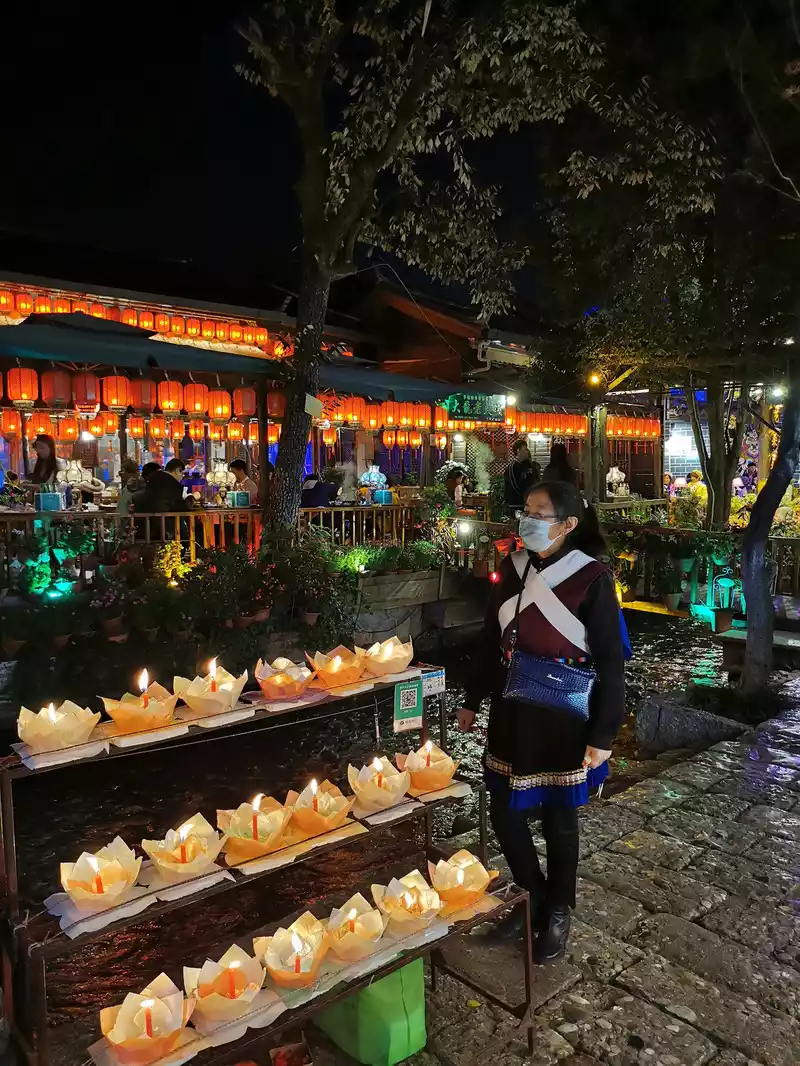
Put a river lantern to fulfill a wish
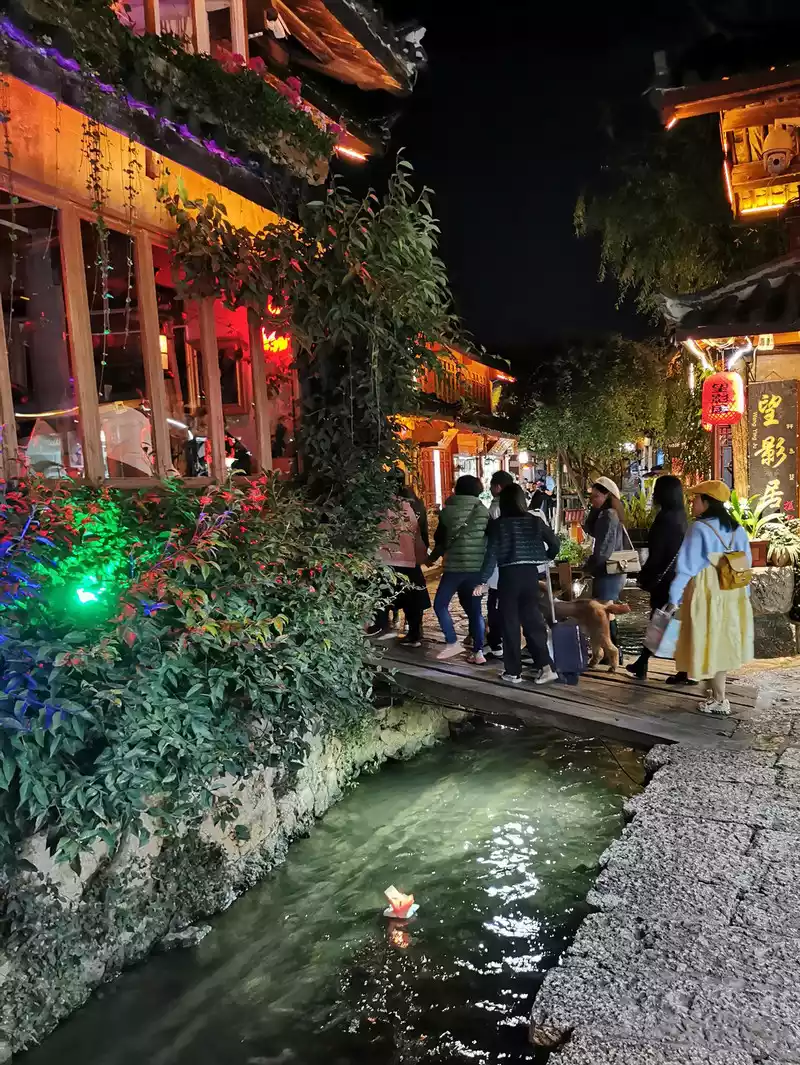
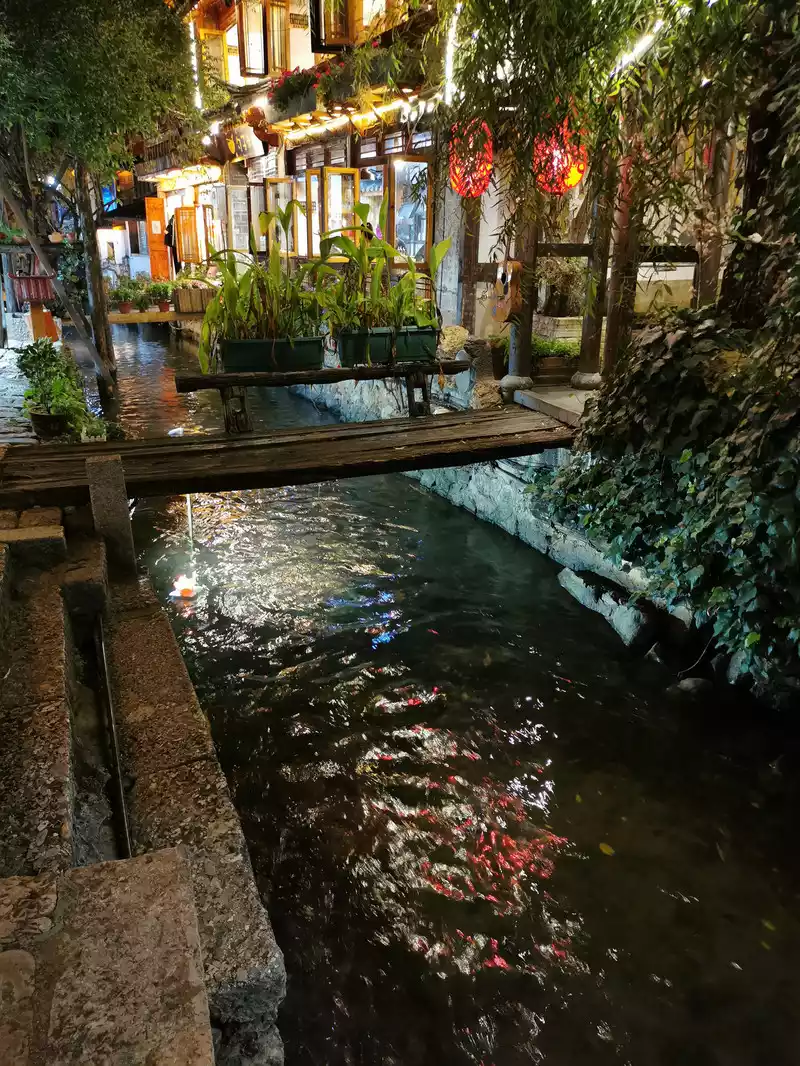
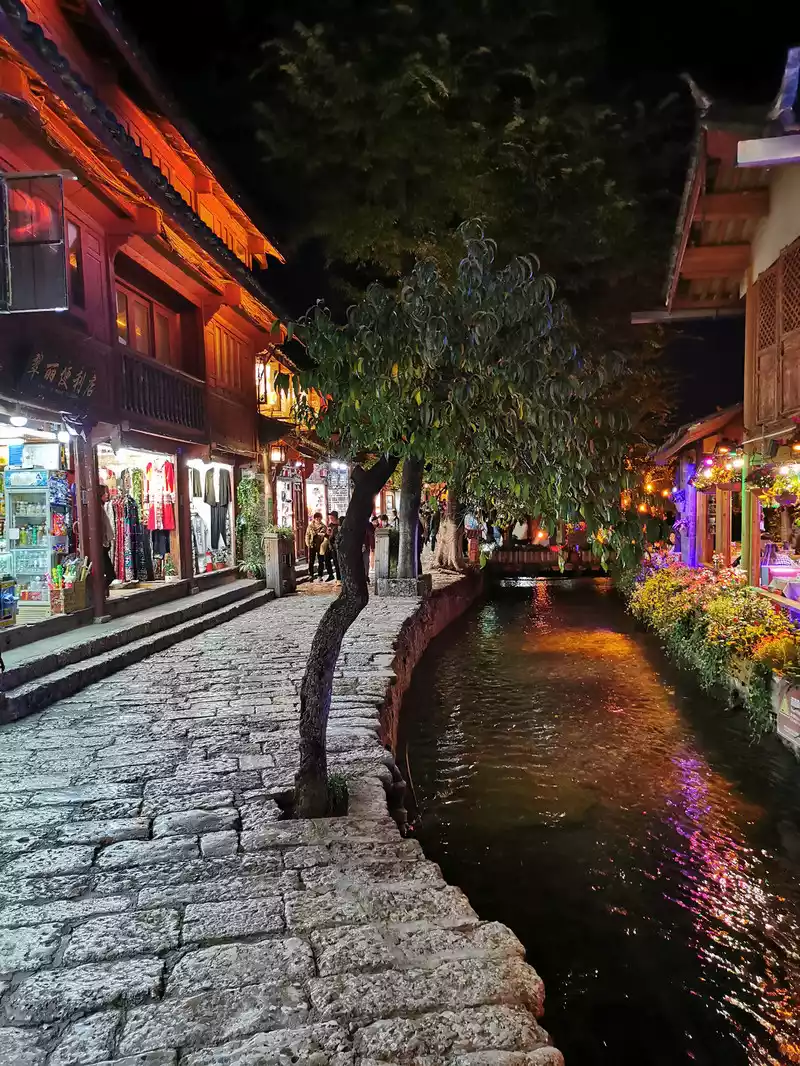
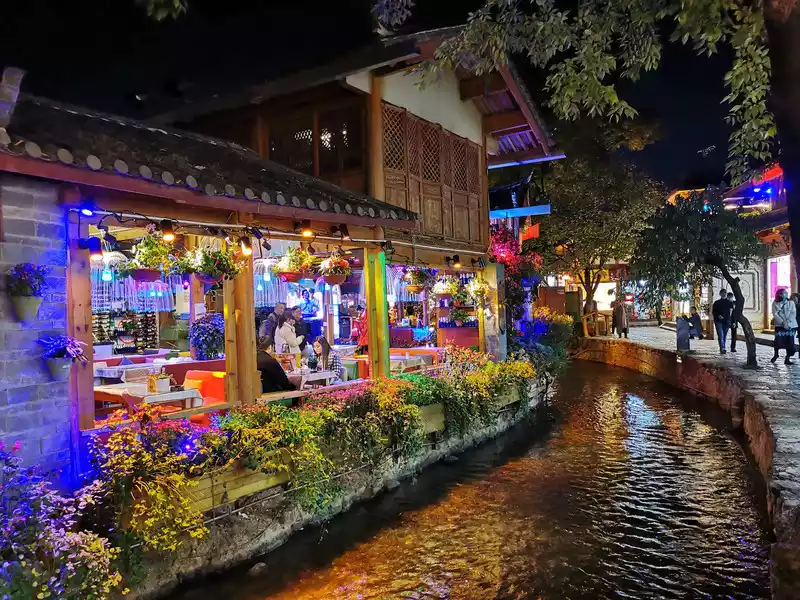
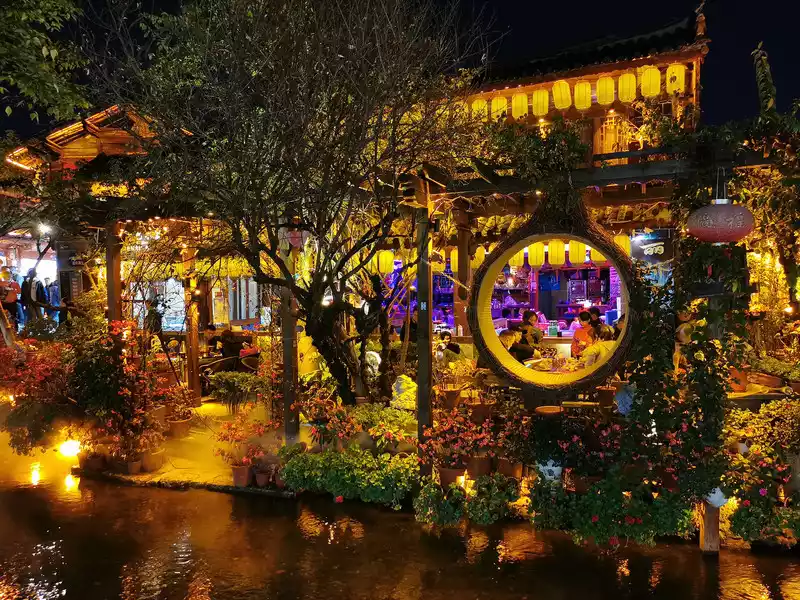
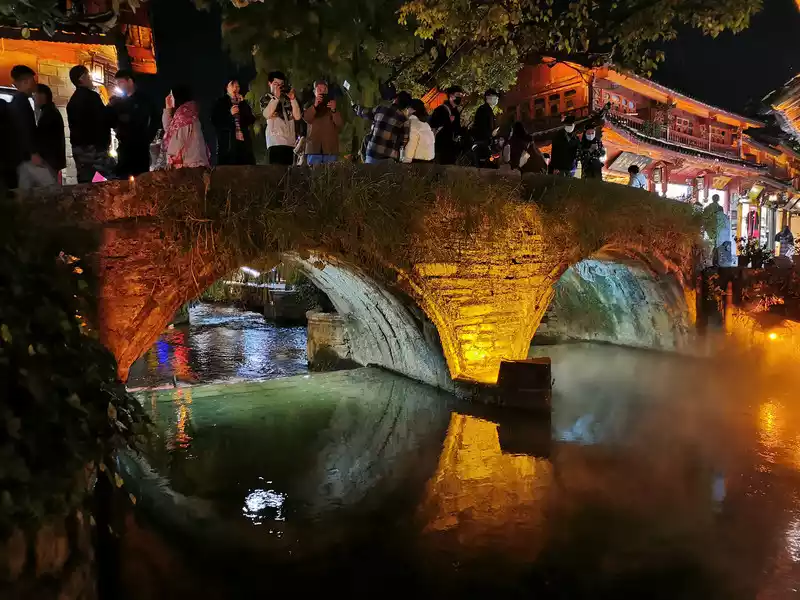
Big Stone Bridge
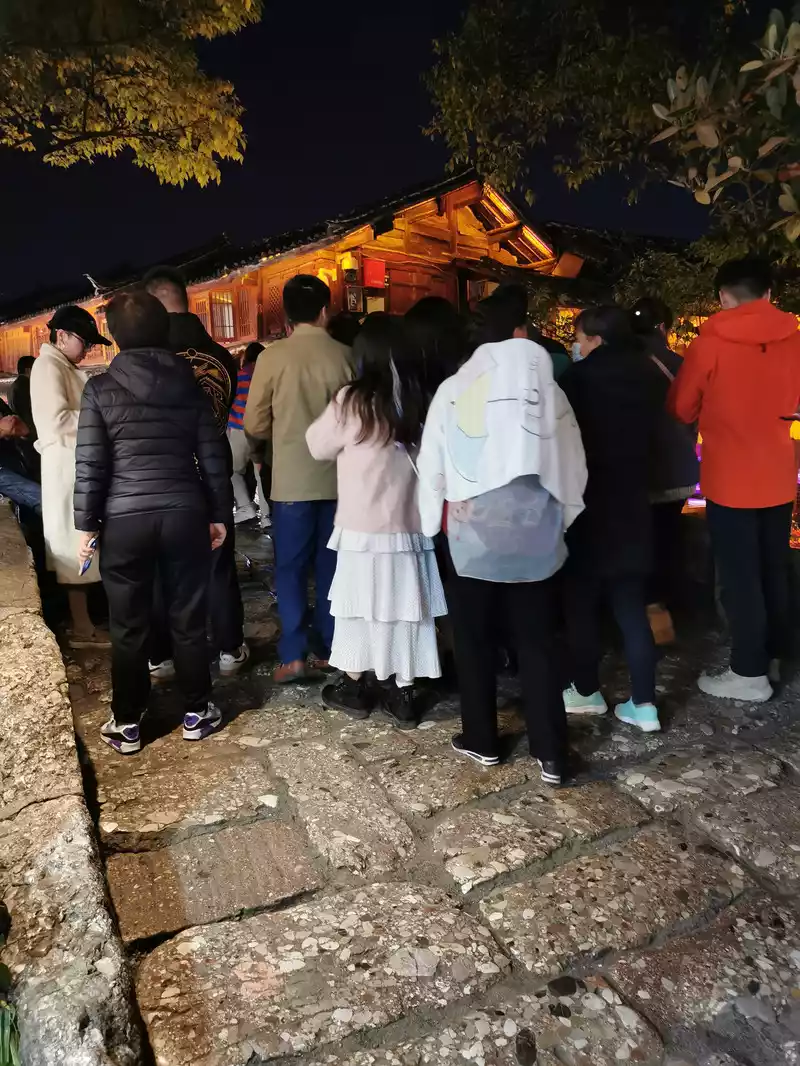
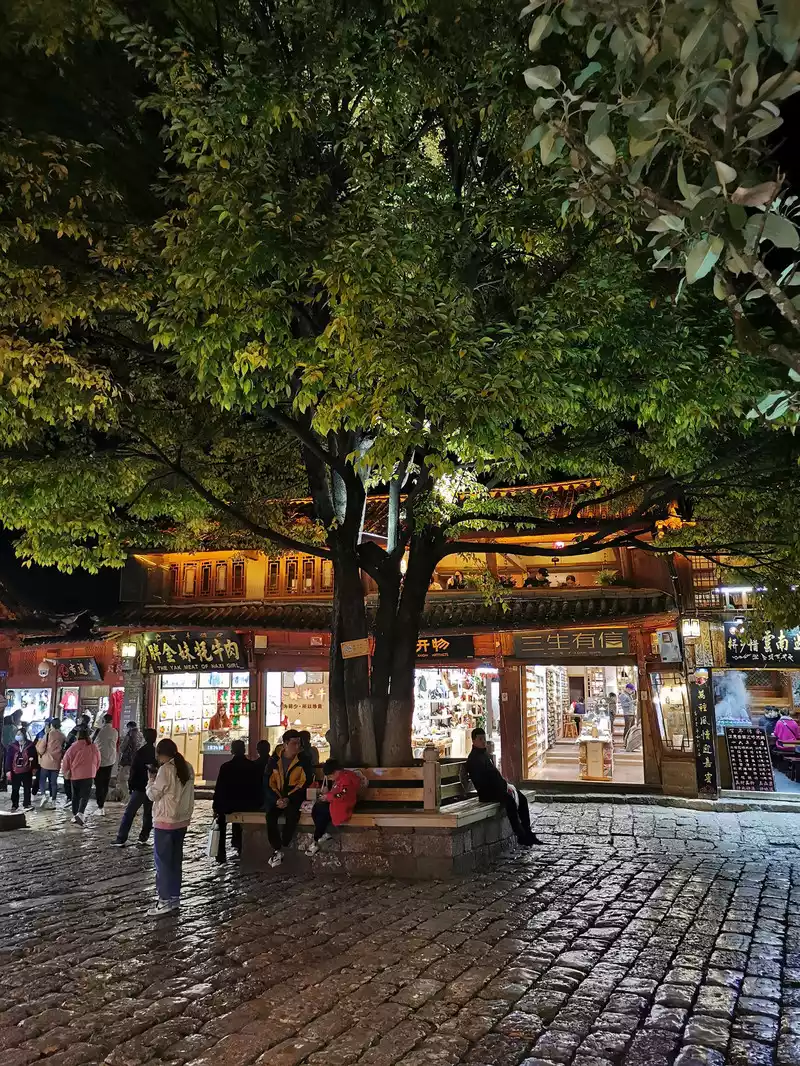
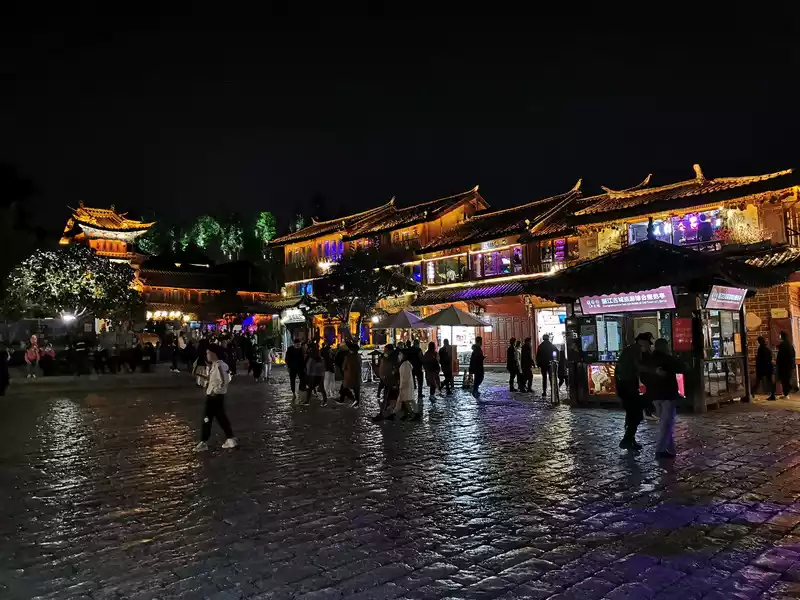
四方街
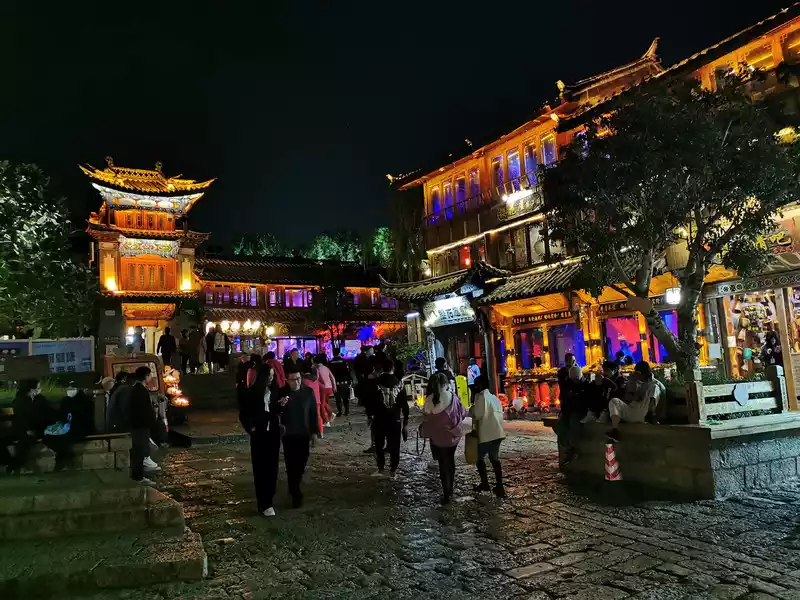
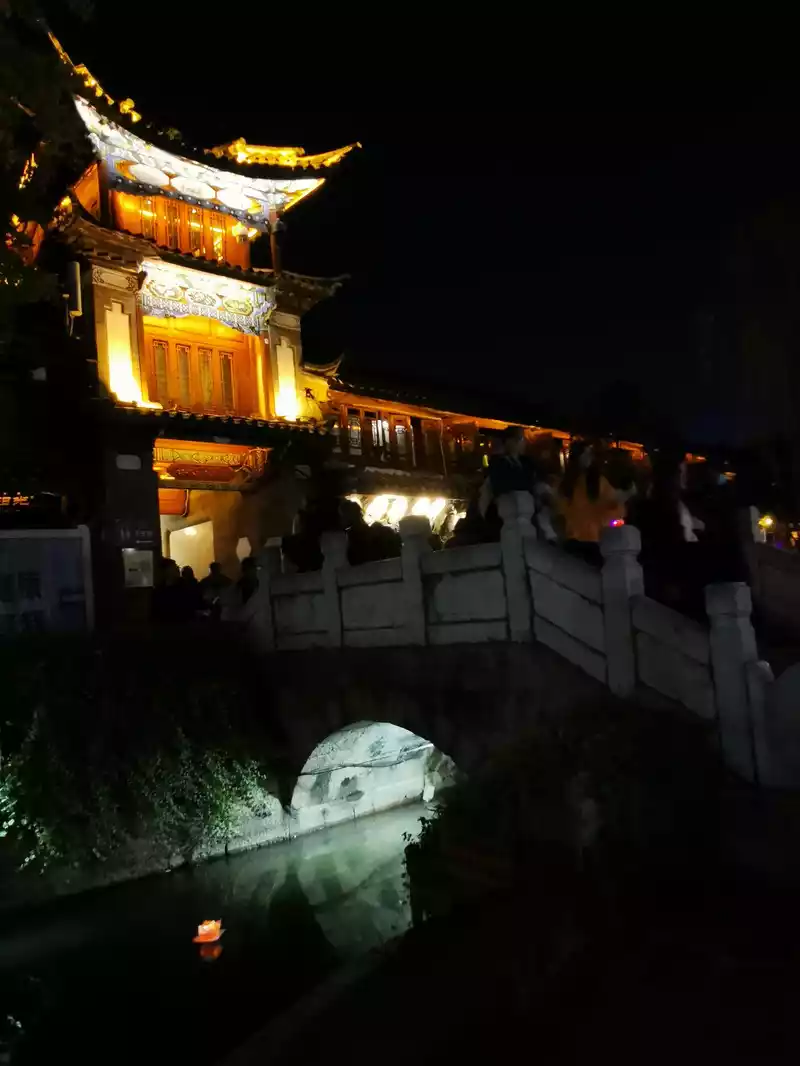
科贡坊
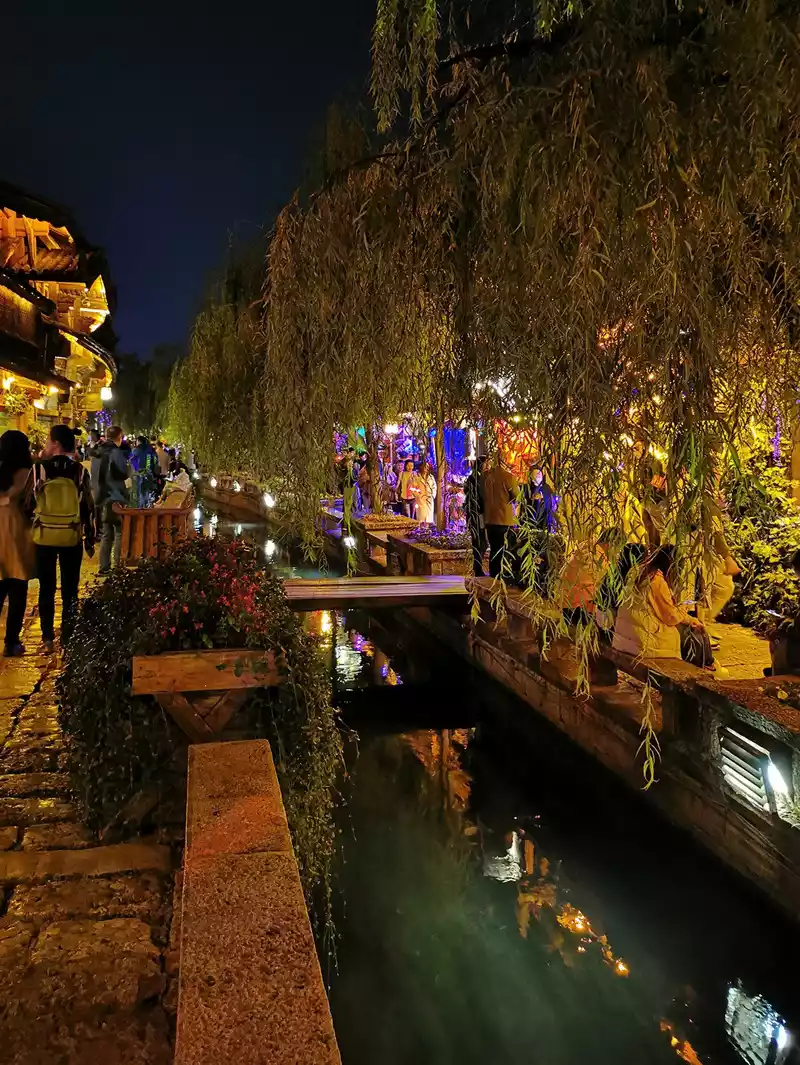
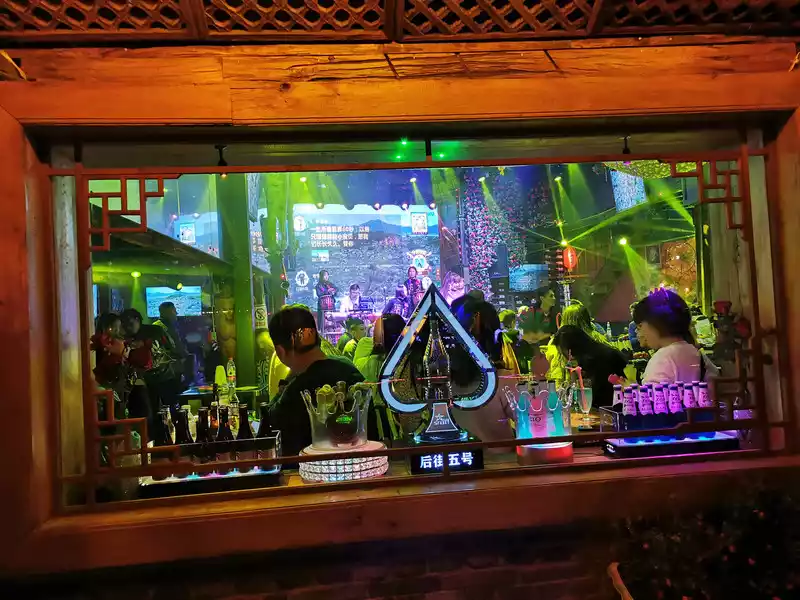
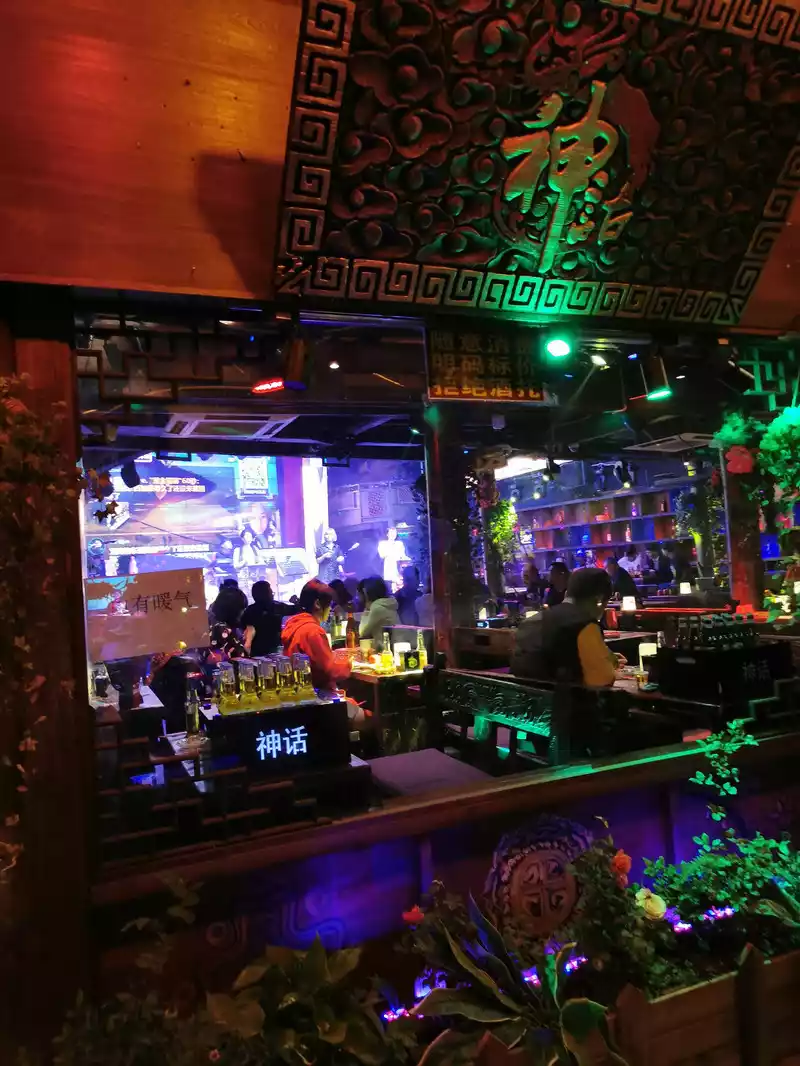
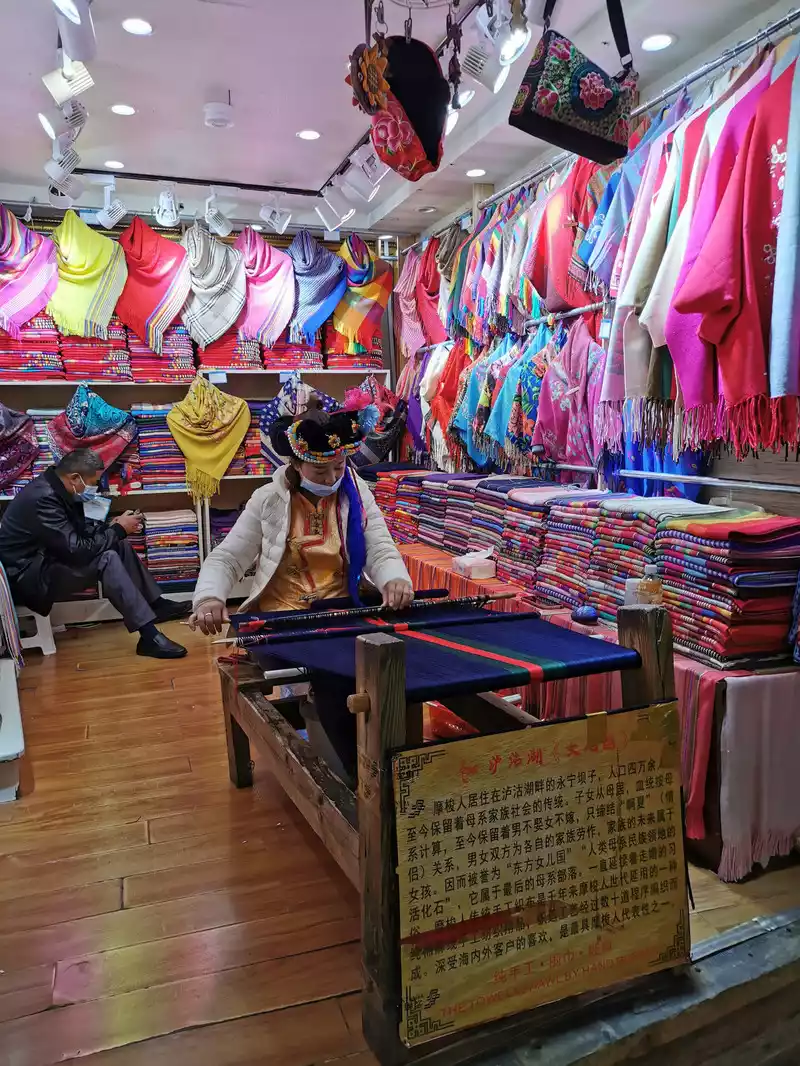
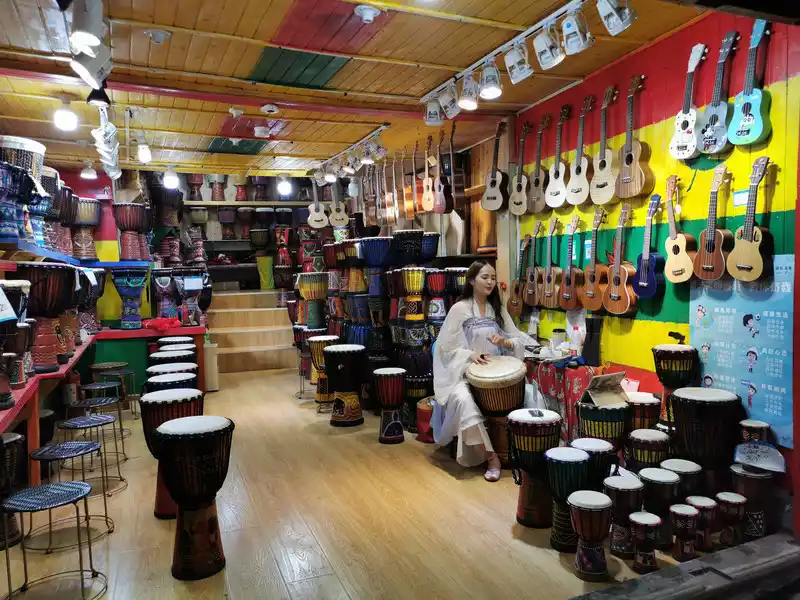
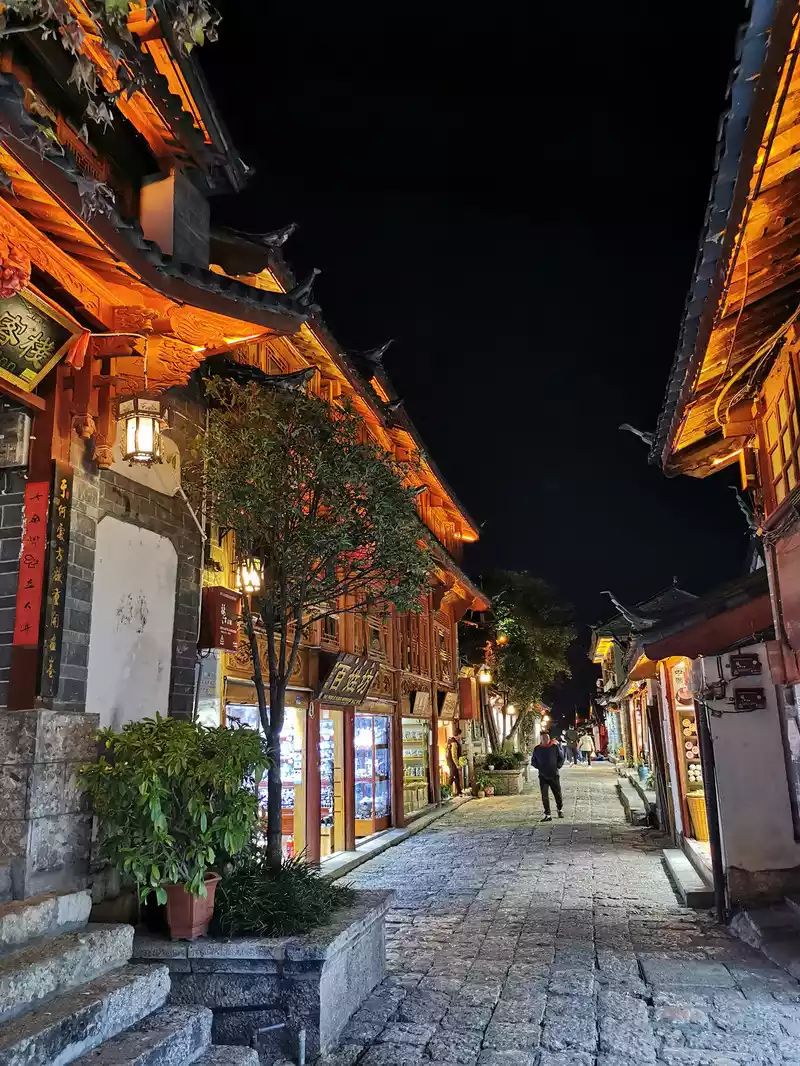
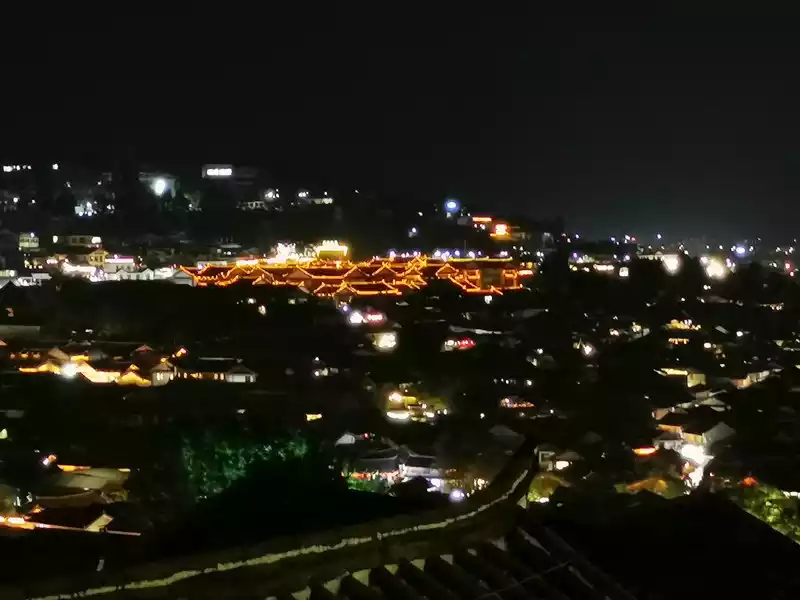
Tell me about the food and accommodation on this trip. Overall, living is not expensive but food is expensive. If you don’t stay in the ancient town in Lijiang, chain hotels will cost you more than 200 yuan a night. The food along the way should be "make do" rather than "fussy". It costs 15-25 yuan without meat. As long as it is meat, regardless of pork, chicken, beef or mutton, it basically costs 40 yuan. The dishes are large but salty and spicy. A bowl of rice is 3 yuan, both with uncooked rice, due to the high altitude.
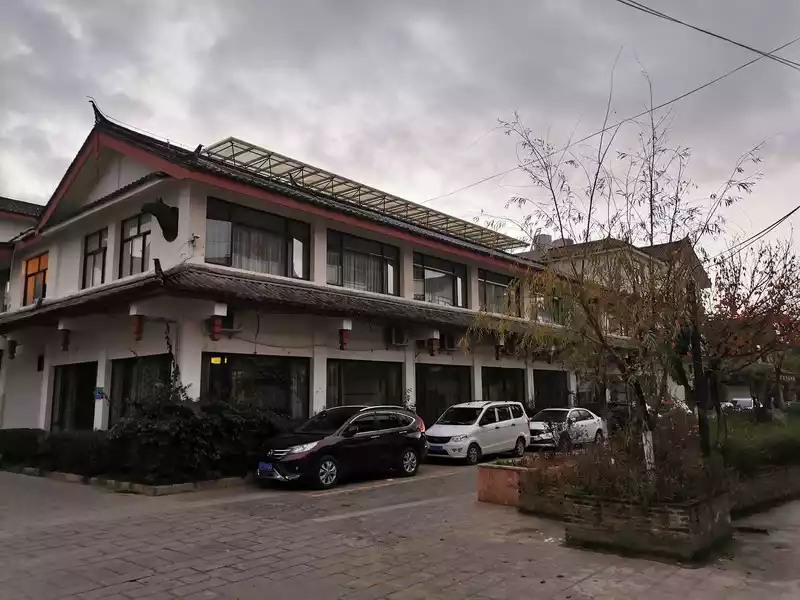
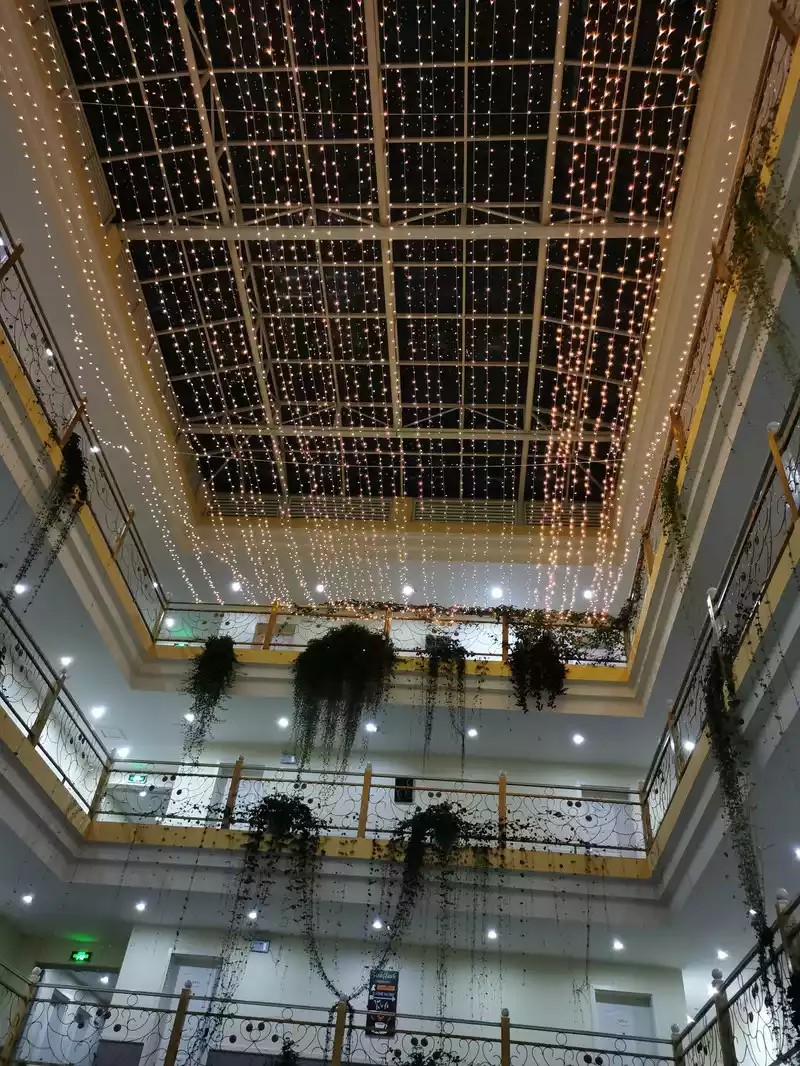
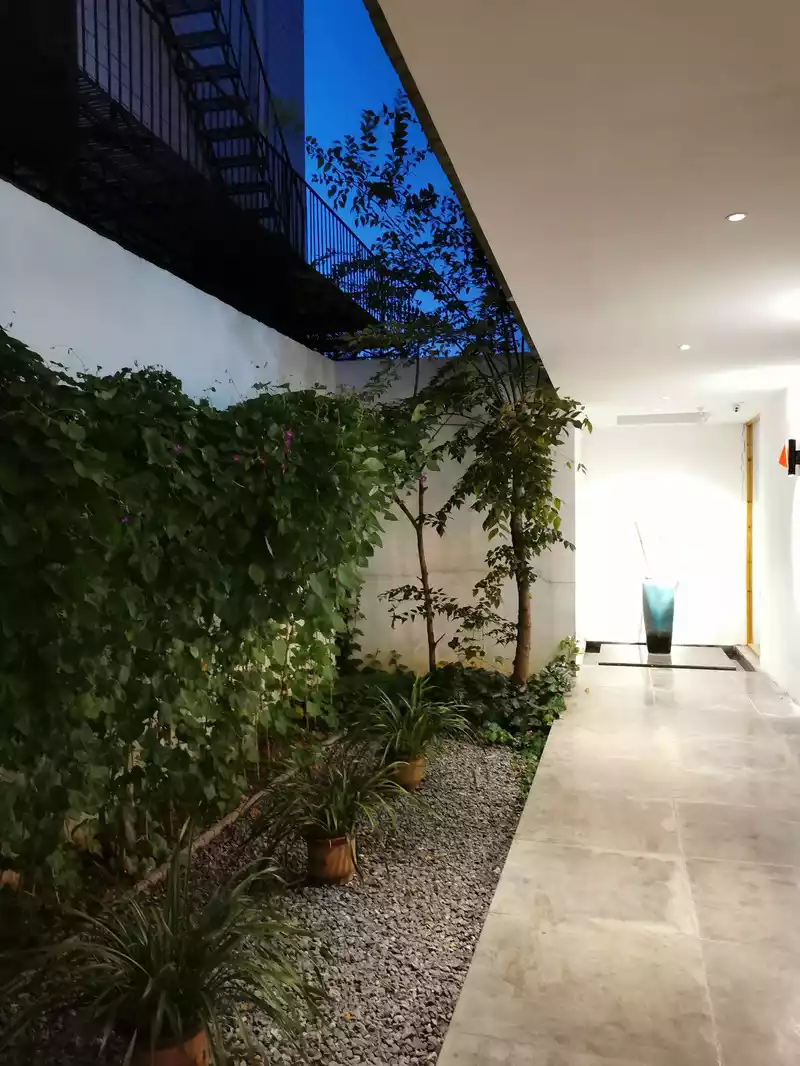
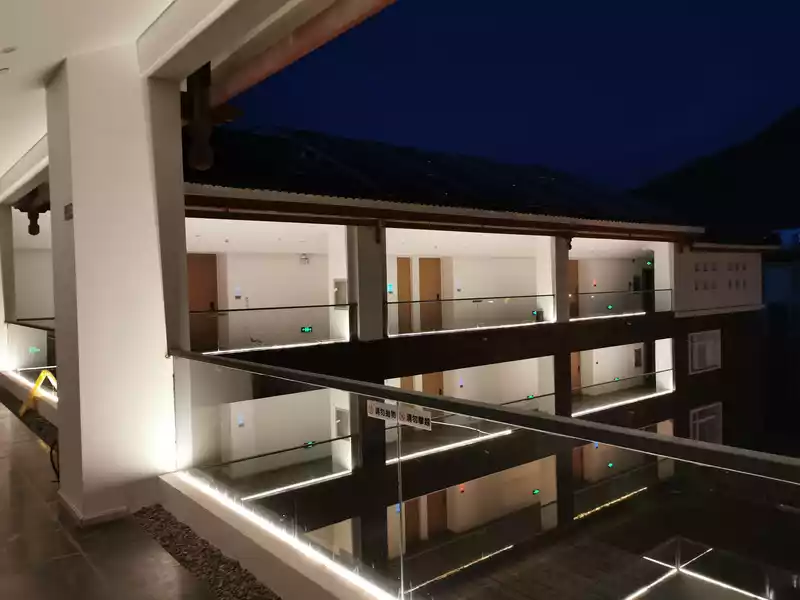
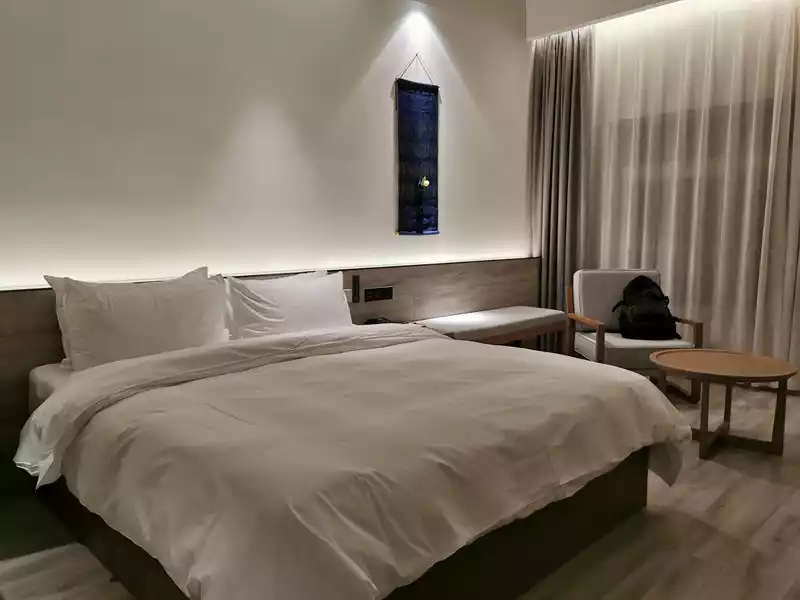
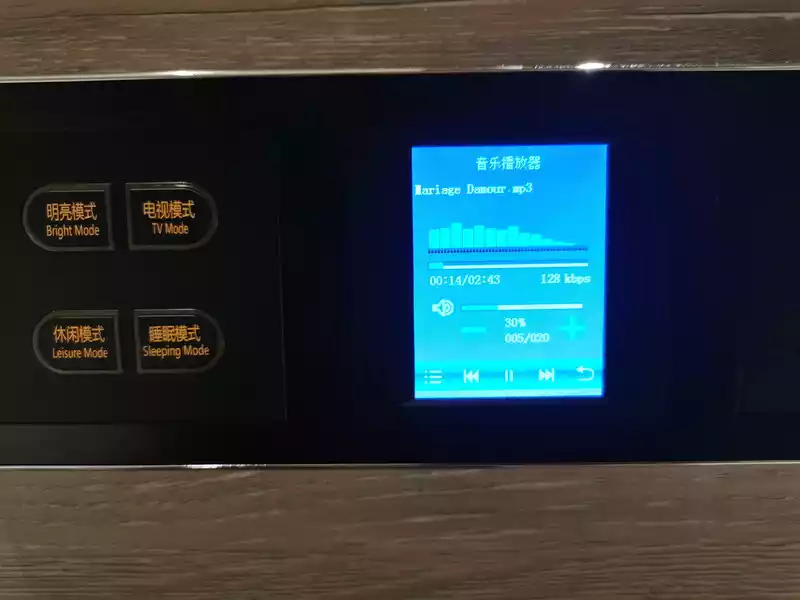
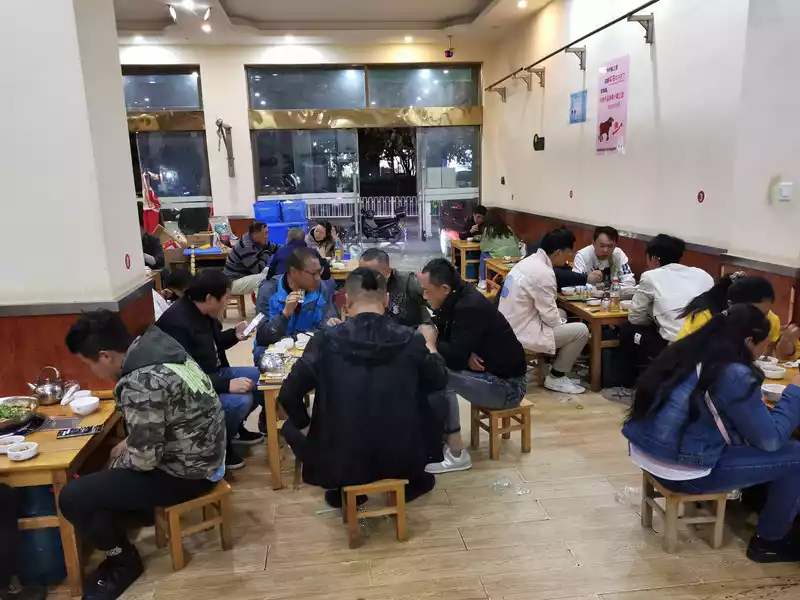
This is my first meal in Lijiang. Beef soup is 40 yuan, real ingredients, large amount, a bit salty, rice is 3 yuan. What is strange is that the tables and stools used by locals to eat are very short. I remember that this was not the case when I came to Lijiang a few years ago.
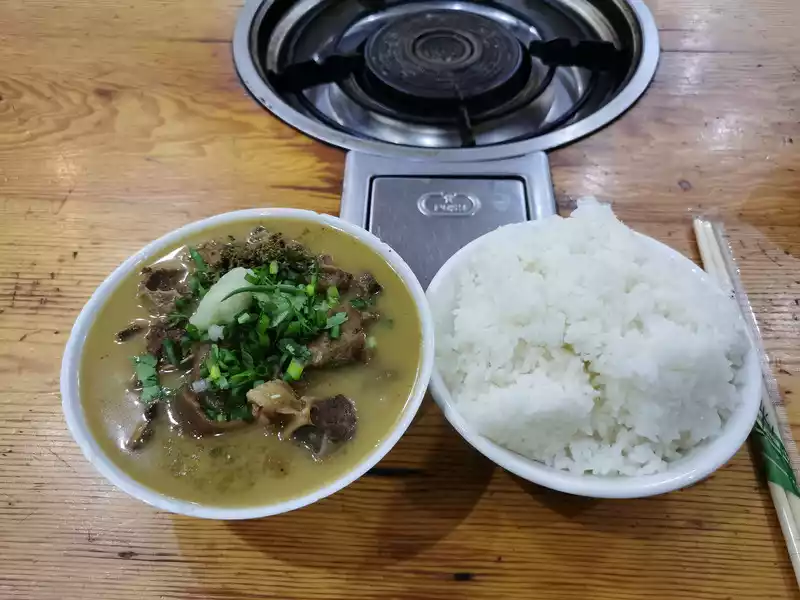
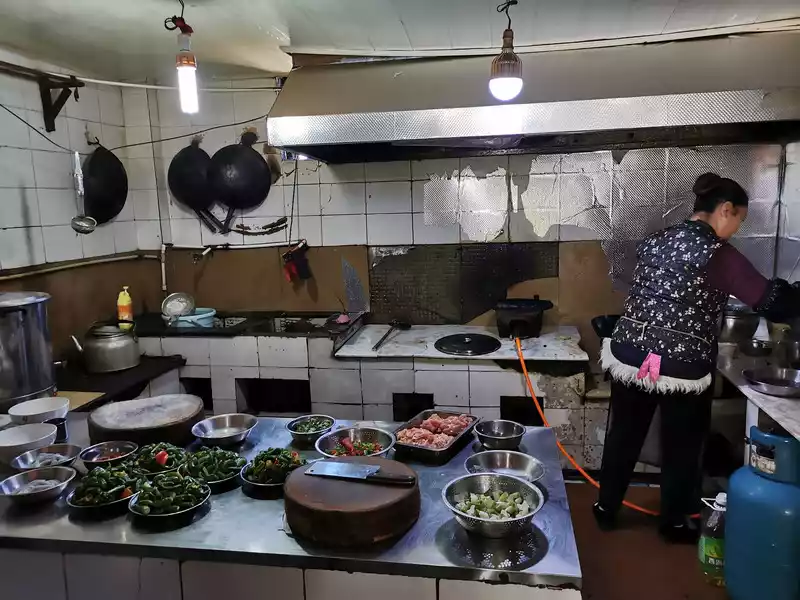
This is a hotel next to Shangri-La Passenger Terminal. The green pepper meat slices are 40 yuan, large in quantity, oily and salty, and the rice is 3 yuan.
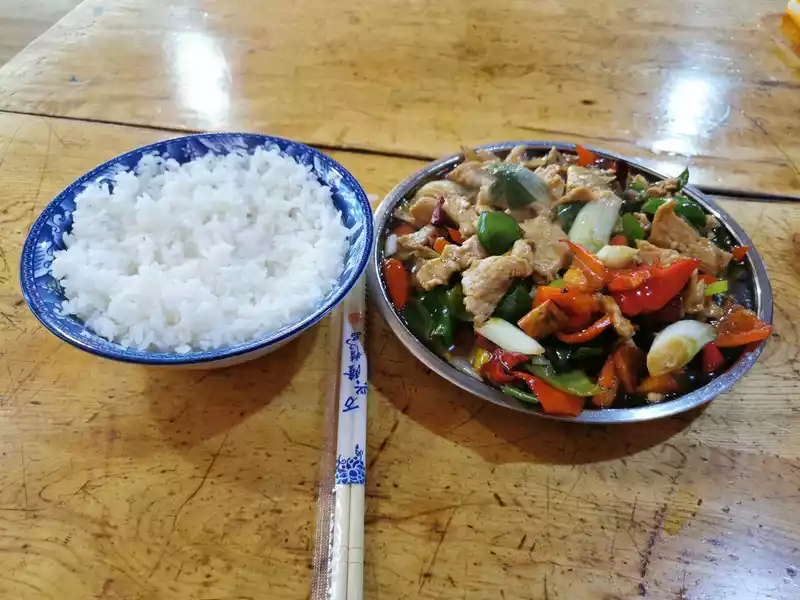
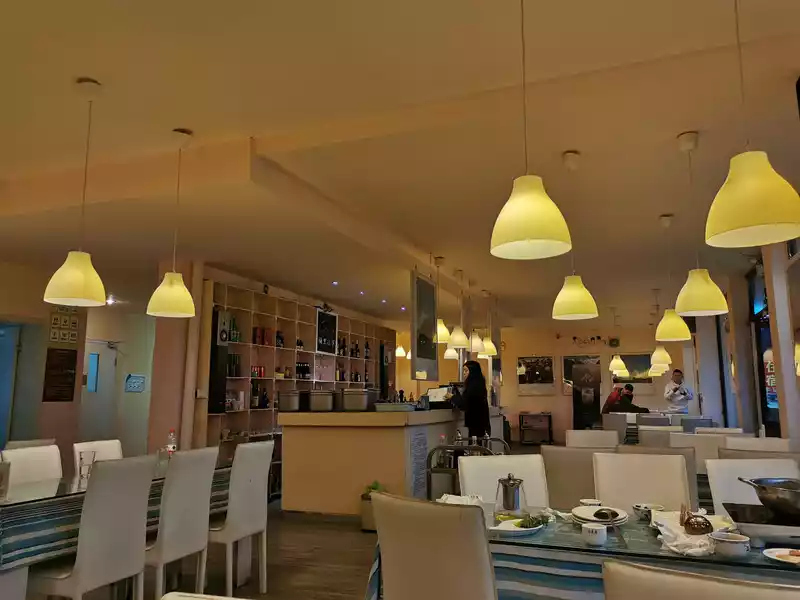
This is Deqin Meili Past Inn. Green pepper meat slices are 38 yuan, tomato and egg soup is 28 yuan, and rice is 2 yuan. The portions are slightly smaller and the taste is lighter.
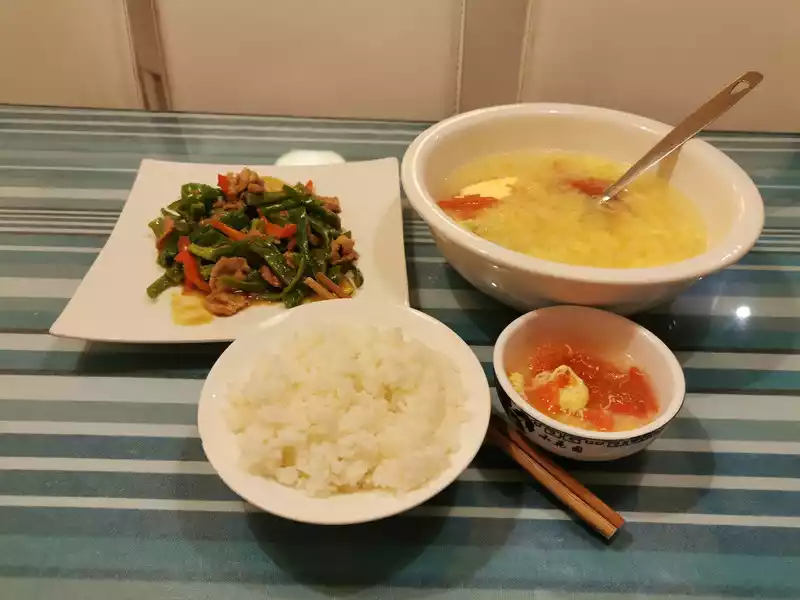
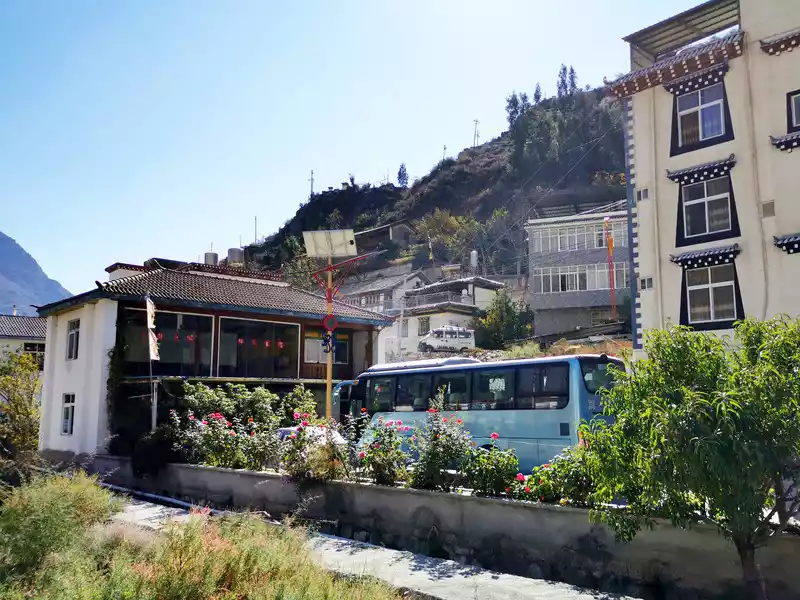
On the way back to Lijiang from Deqin, the shuttle bus driver stopped for lunch in Benzilan Town. It was the worst meal of the entire trip. Stir-fried pork slices with lettuce are 20 yuan, and vermicelli mixed with kelp is 10 yuan. They don't look expensive, but the portion is small and too salty. The rice is 3 yuan and too hard. I didn't even finish the meal. It is best not to travel in a group. If you follow the wrong people or eat in the wrong places, you will feel that there is something wrong with your IQ.
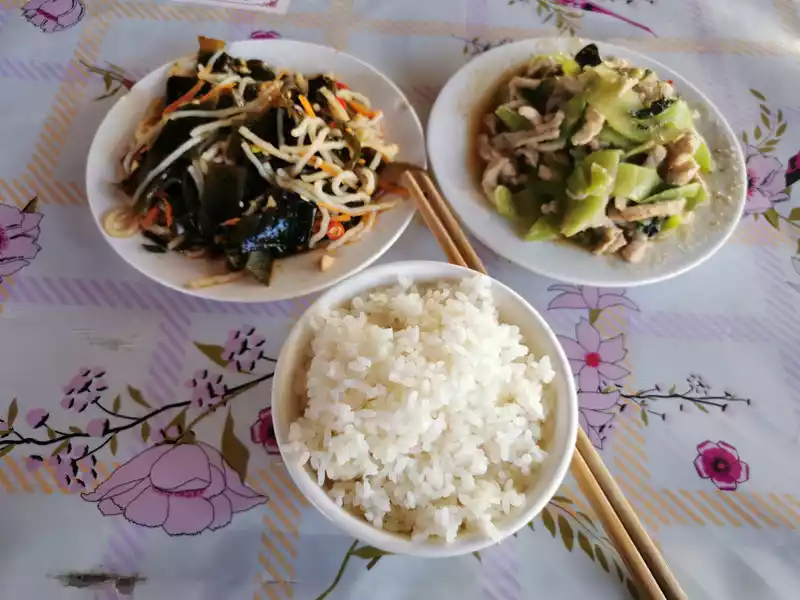
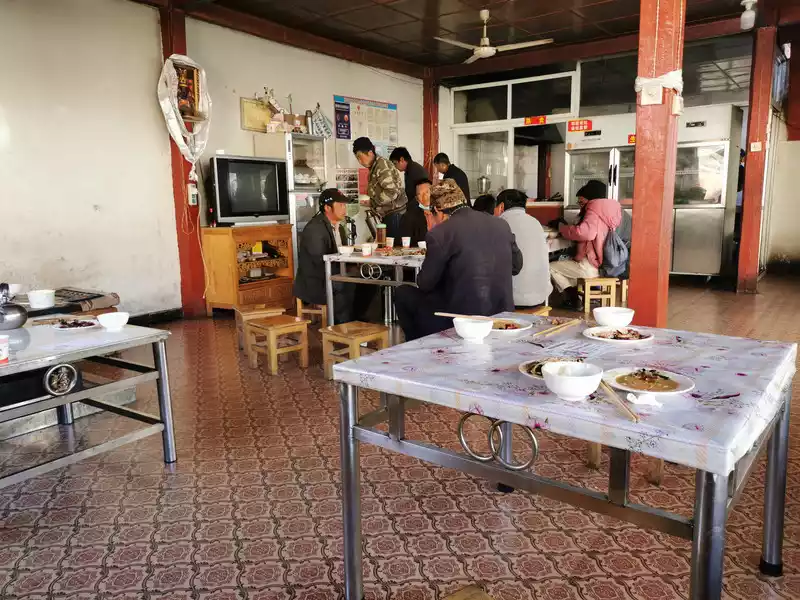
See? The tables and stools are still very low.
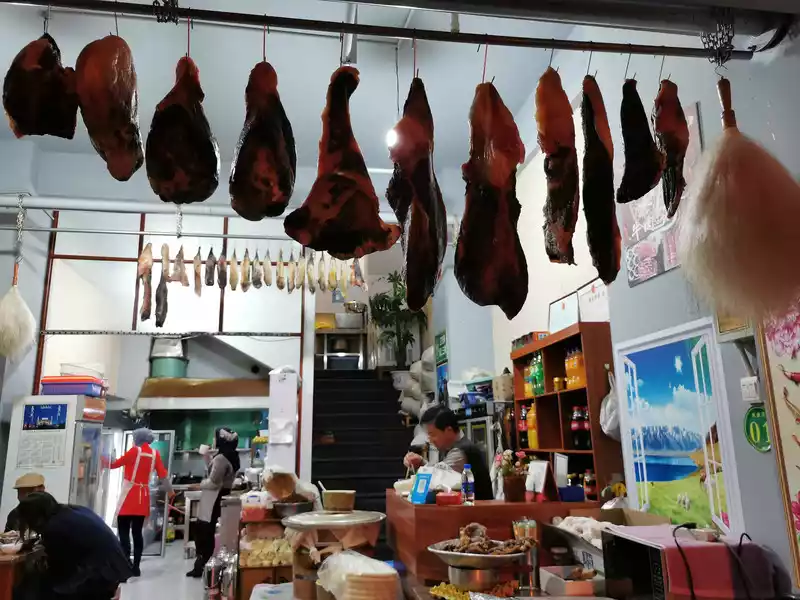
The last meal in Lijiang. Stir-fried beef with celery is 40 yuan, vegetable and tofu soup is 15 yuan, and rice is 3 yuan. What is puzzling is that the beef served is not sliced or cubed meat, but minced meat. This is true in Lijiang. Braised and stir-fried are minced meat, and only twice-cooked pork is sliced meat. Who knows? The taste is okay. Because I told you beforehand, it is not so salty or spicy, but there is still a lot of oil.
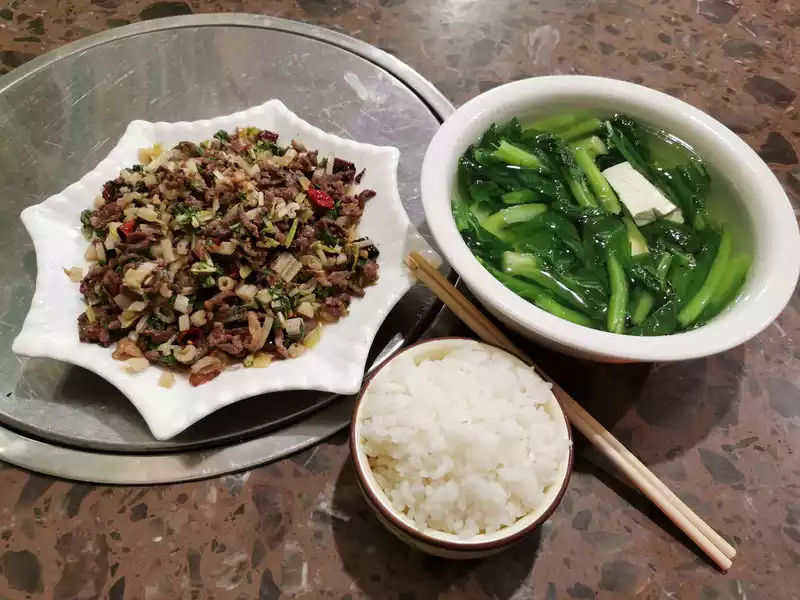
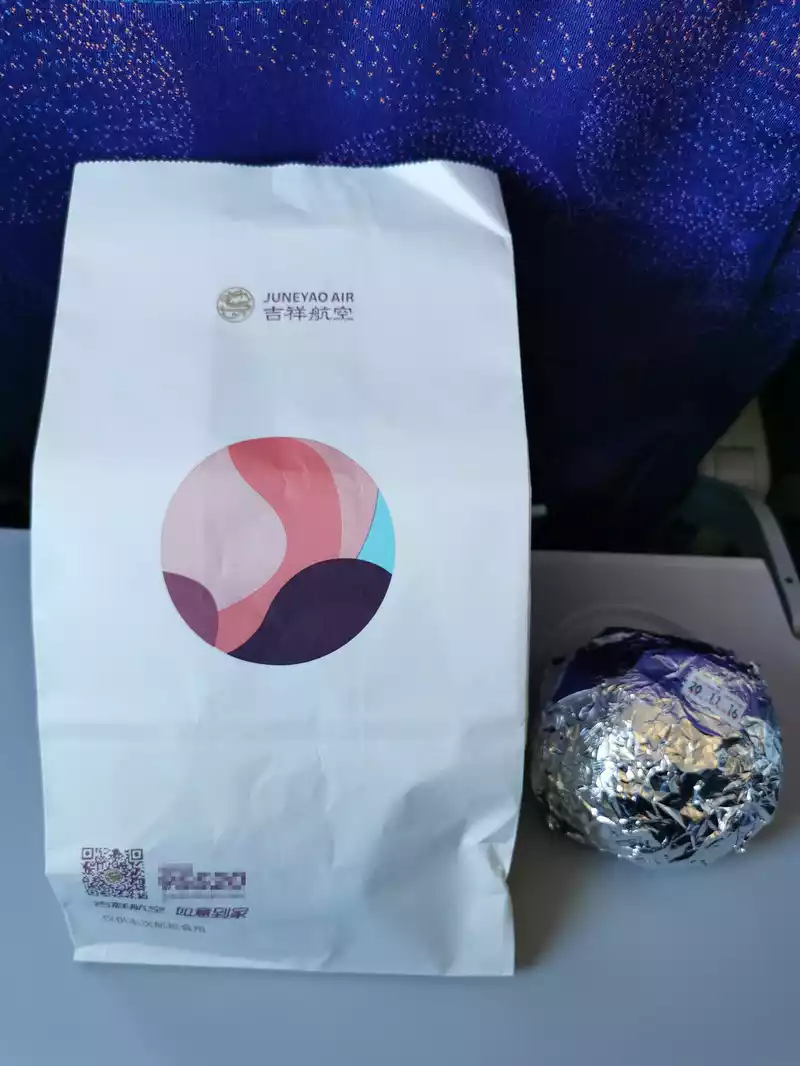
This is an airline meal. During the epidemic, everything is kept simple.
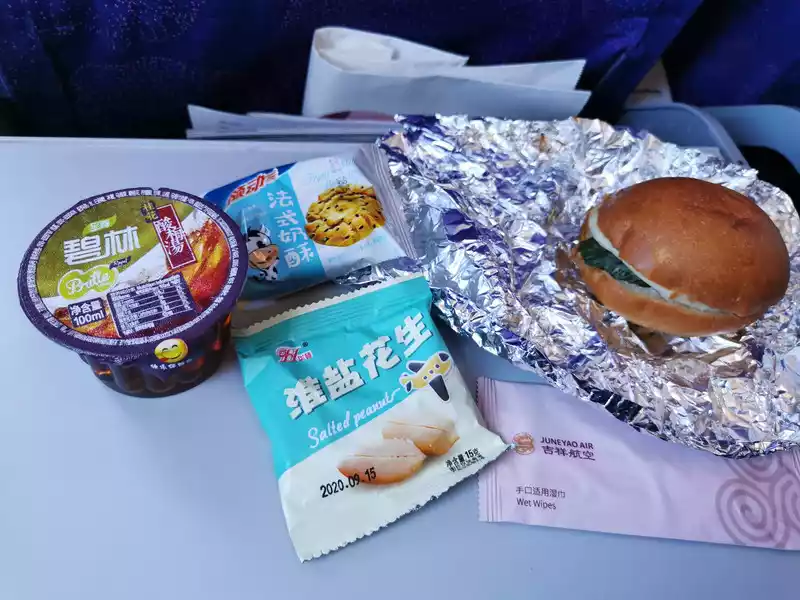
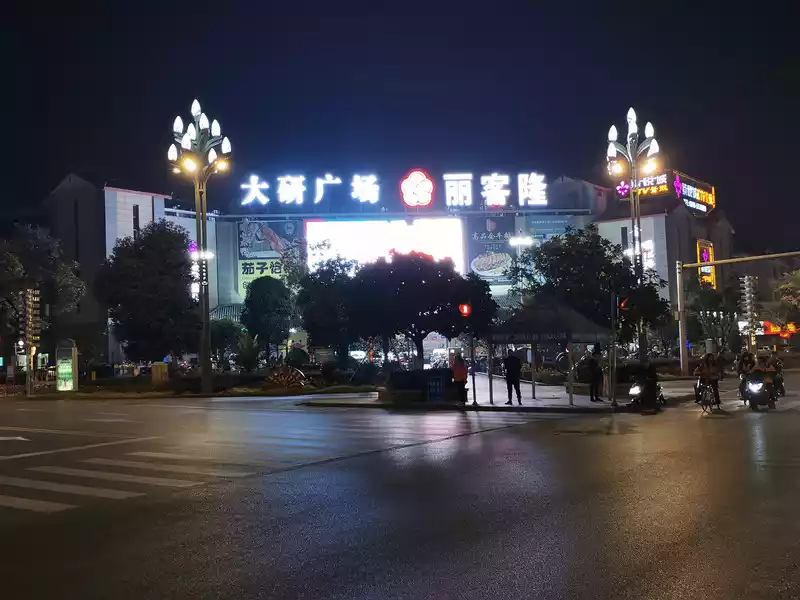
【玄武湖日落】
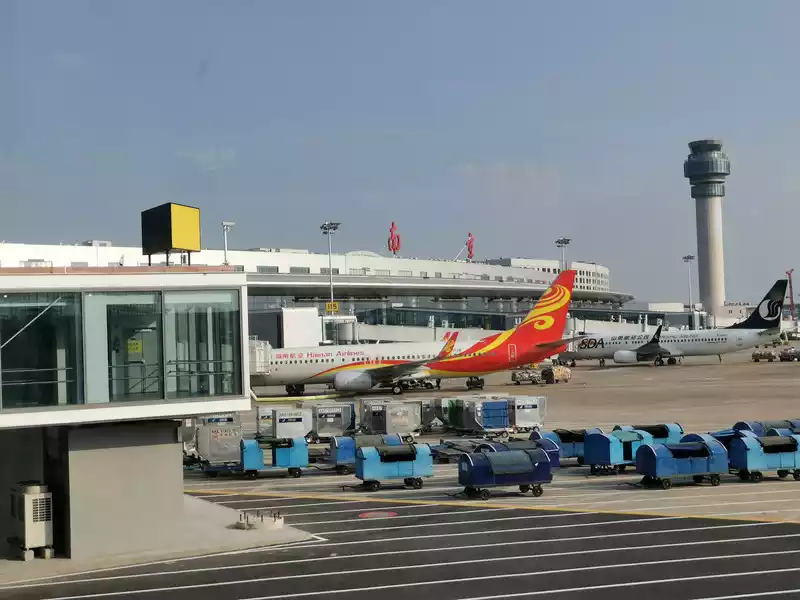
This time I was waiting at Nanjing Railway Station and had more than an hour of free time. I just happened to go to the Xuanwu Lake next to it to watch the beautiful sunset.
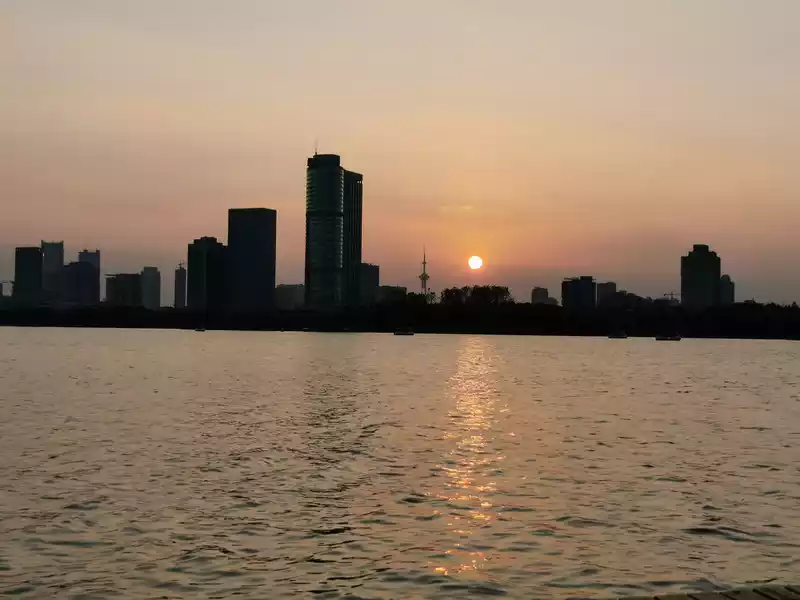
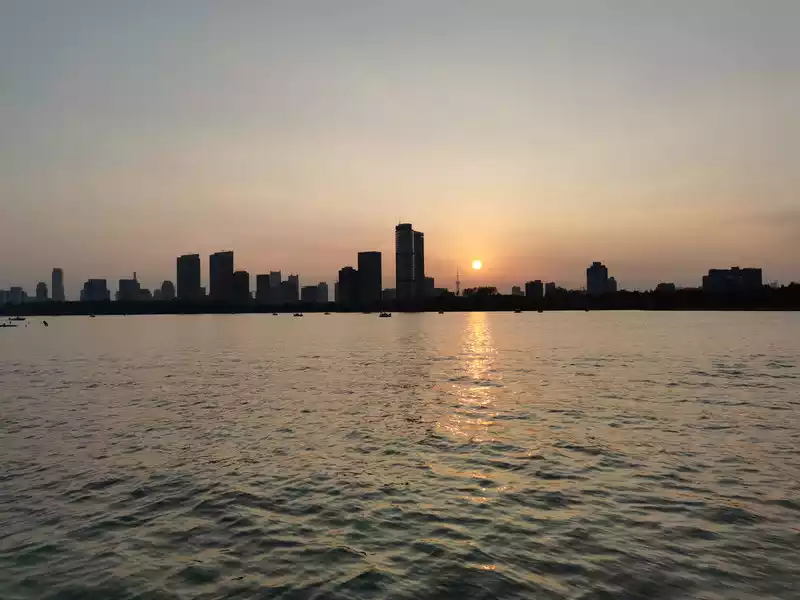
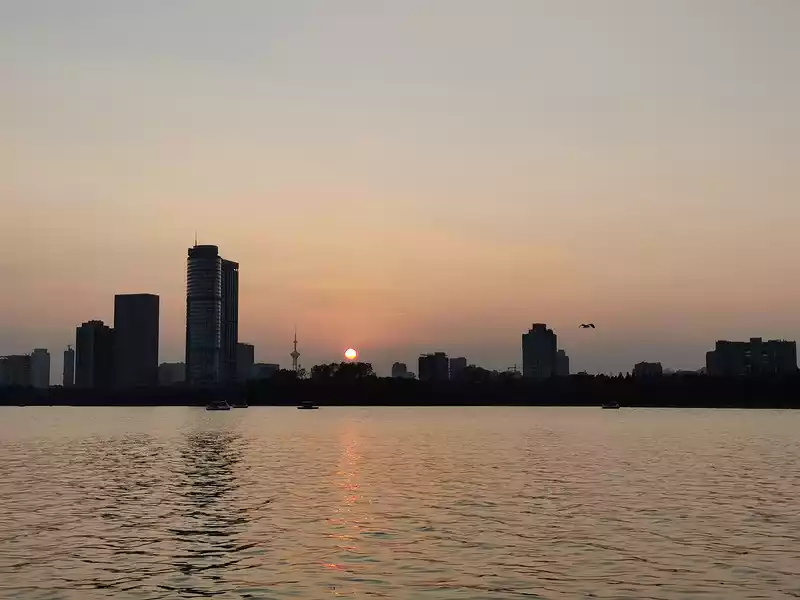
The water and sky are of the same color, and the sun sets over the long river. It is the same sun as what you see at Qingxi Reservoir in Lijiang, but the difference is that there are fewer rural mountain dwellings and more high-rise buildings.
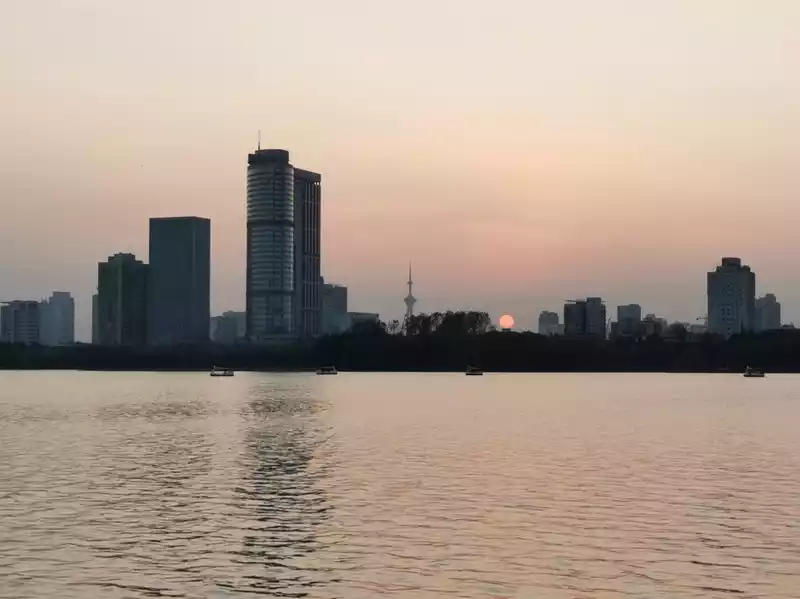
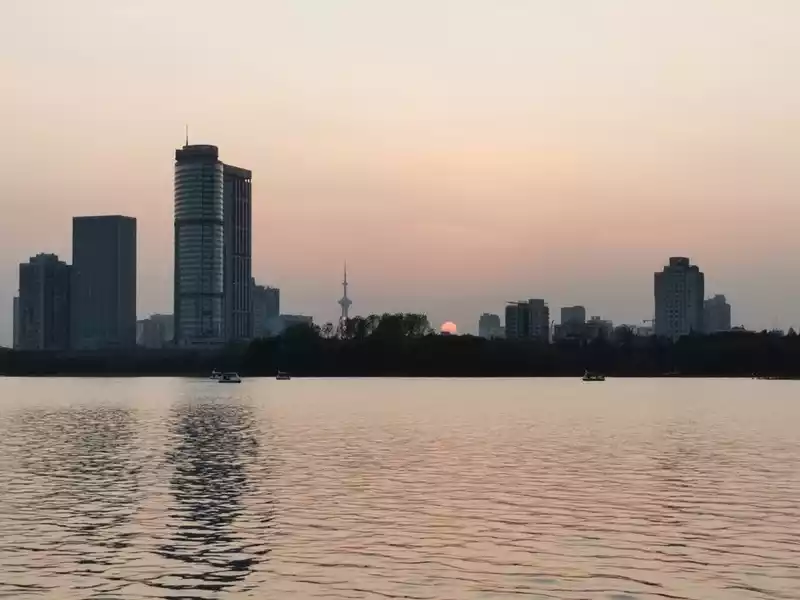
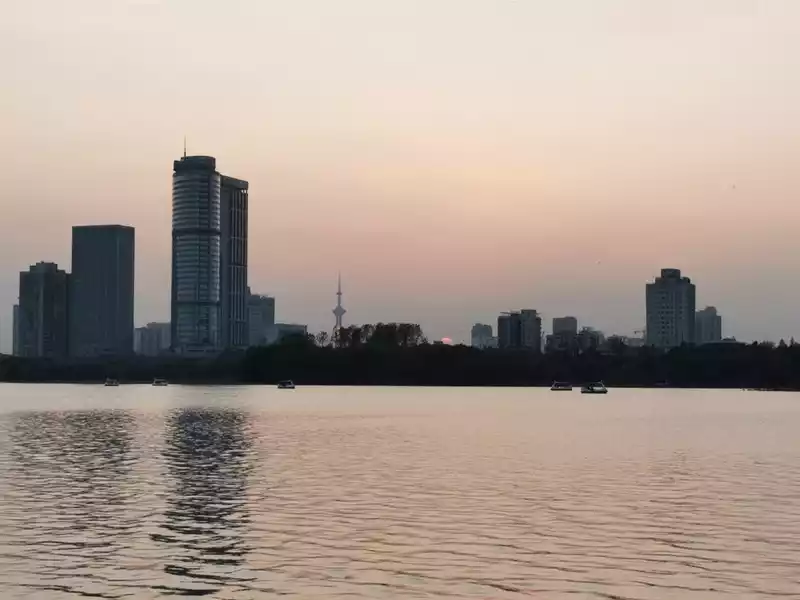
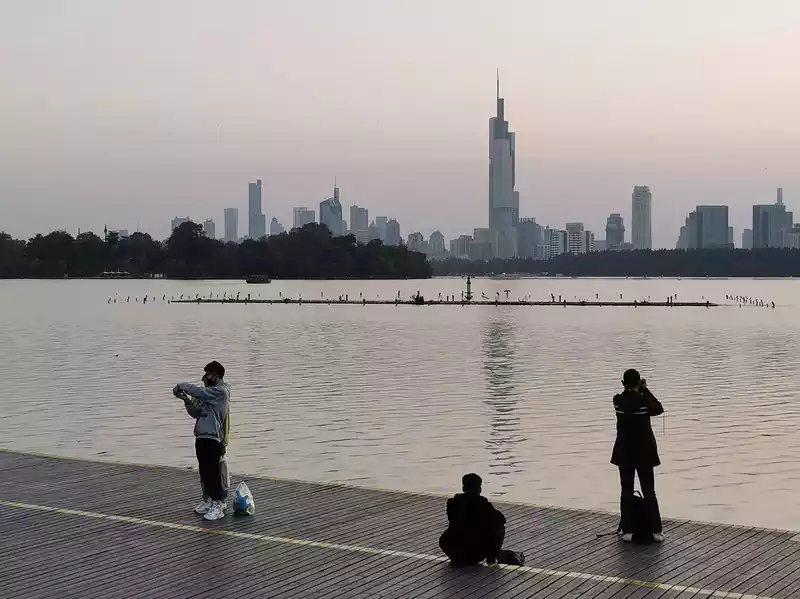
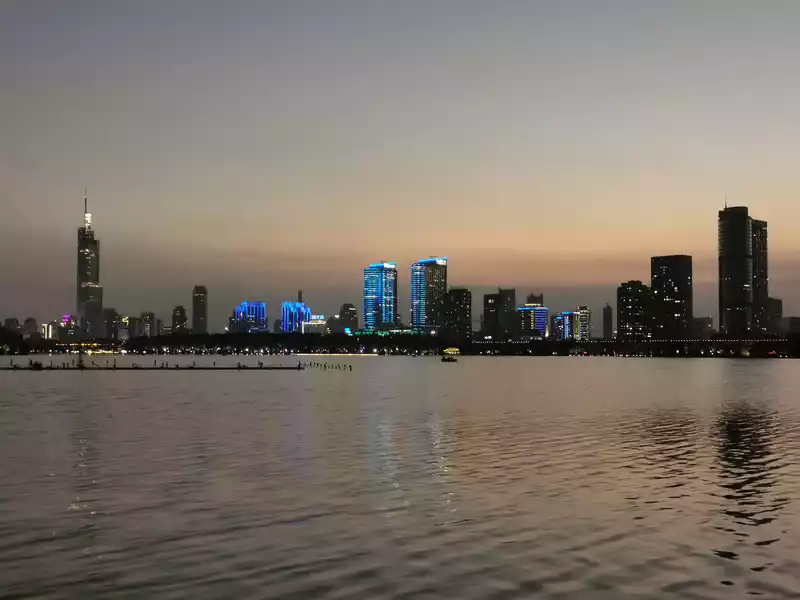
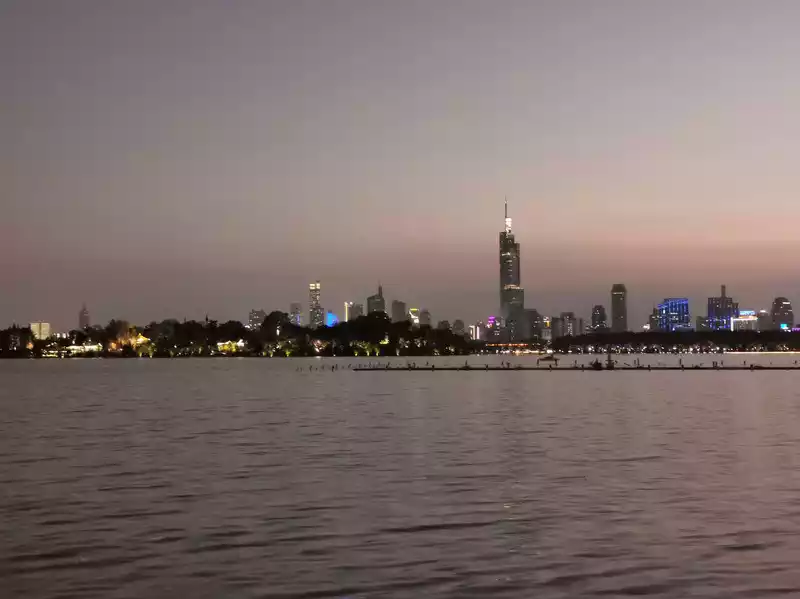
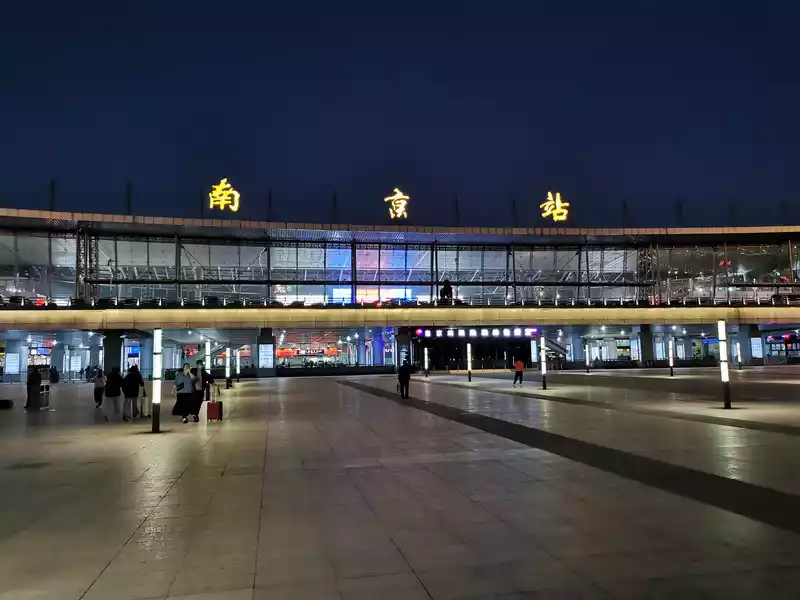
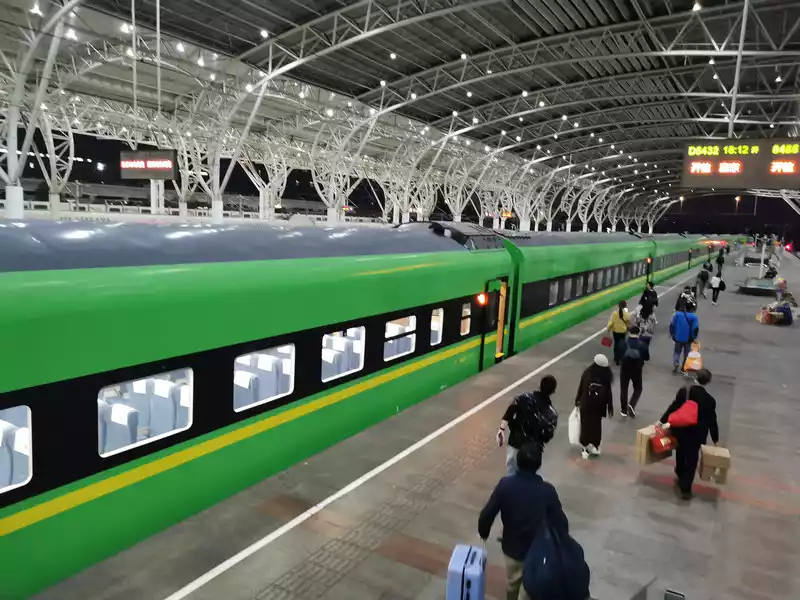
Thanks for reading.
Number of days: 1 day, Average cost: 180 yuan, Updated: 2020-08-24 23:24
Number of days:7 days, Average cost: 4322 yuan, Updated: 2022-03-24 10:39
Number of days: 4 days, Average cost: 3000 yuan, Updated: 2025.01.09
Number of days: 1 day, Average cost: 300 yuan, Updated: 2021.07.03
Number of days: 1 day, Average cost: 1000 yuan, Updated: 2020.06.17
Number of days:5 days, Average cost: 5,000 yuan, Updated: 2020-05-20 18:07